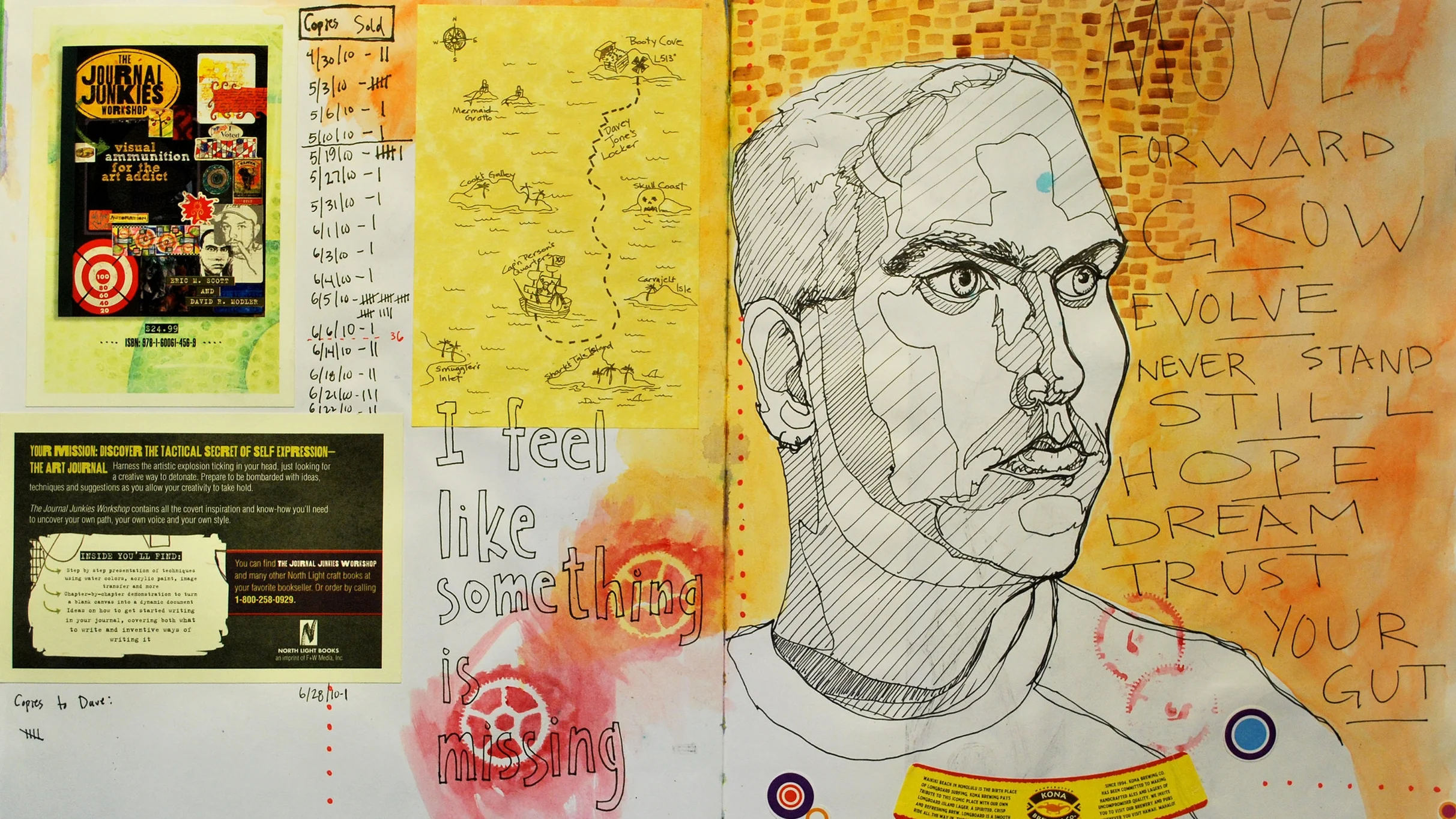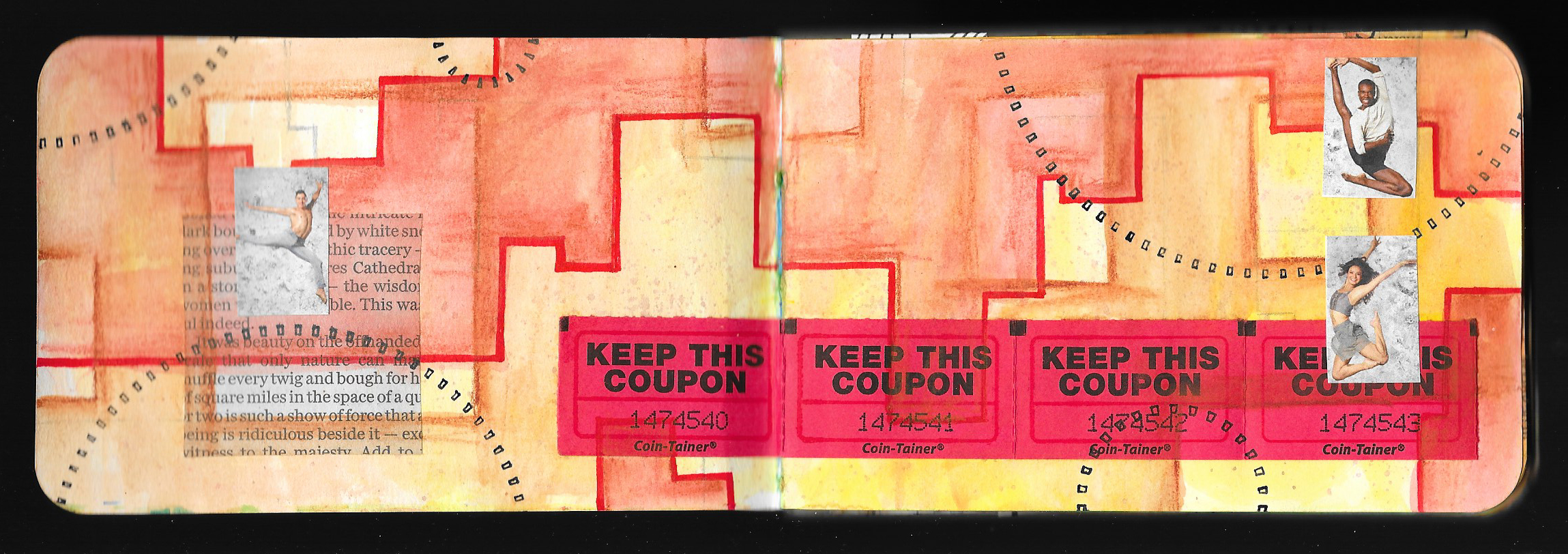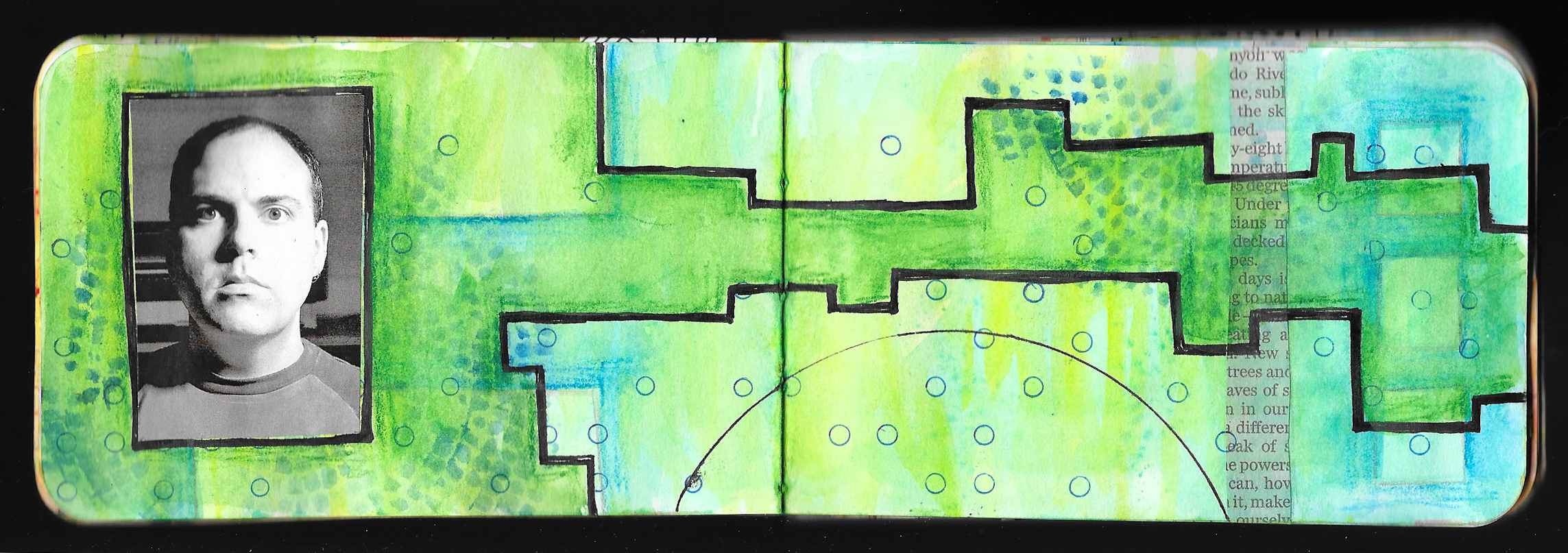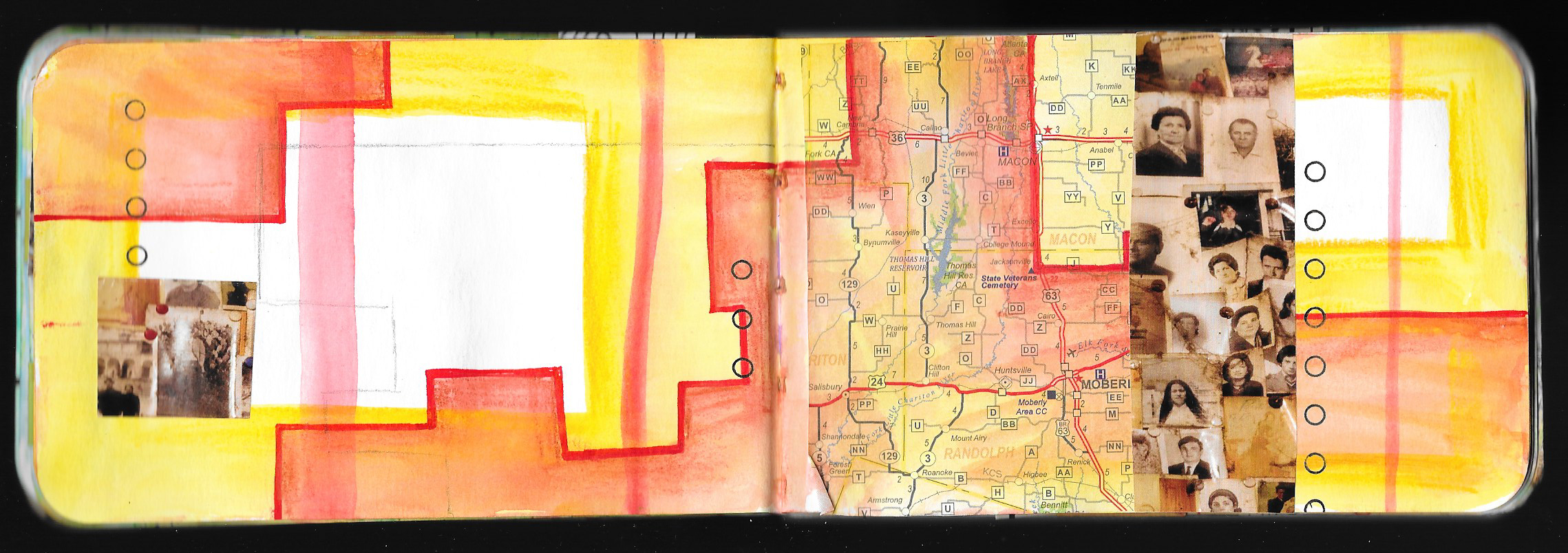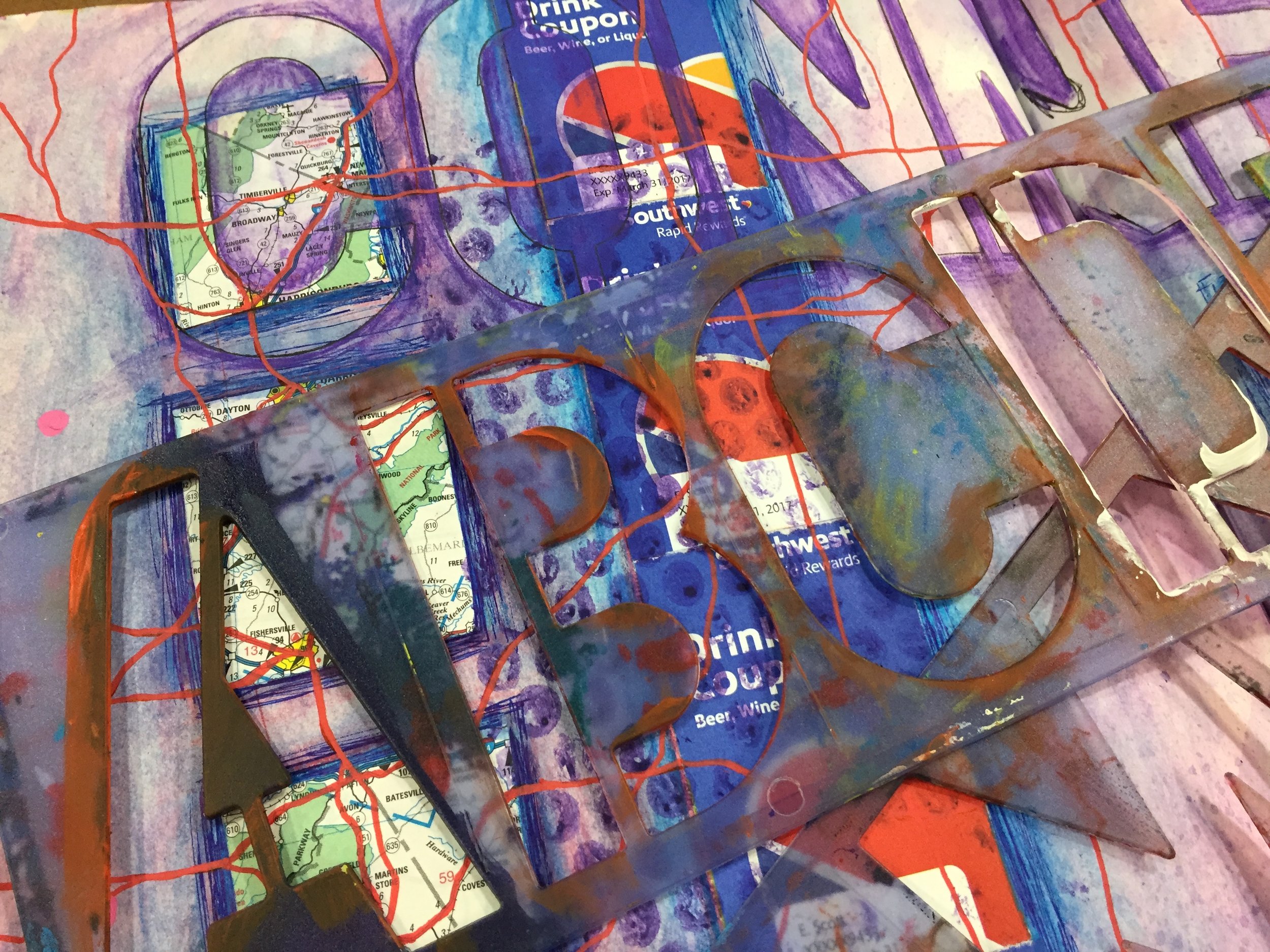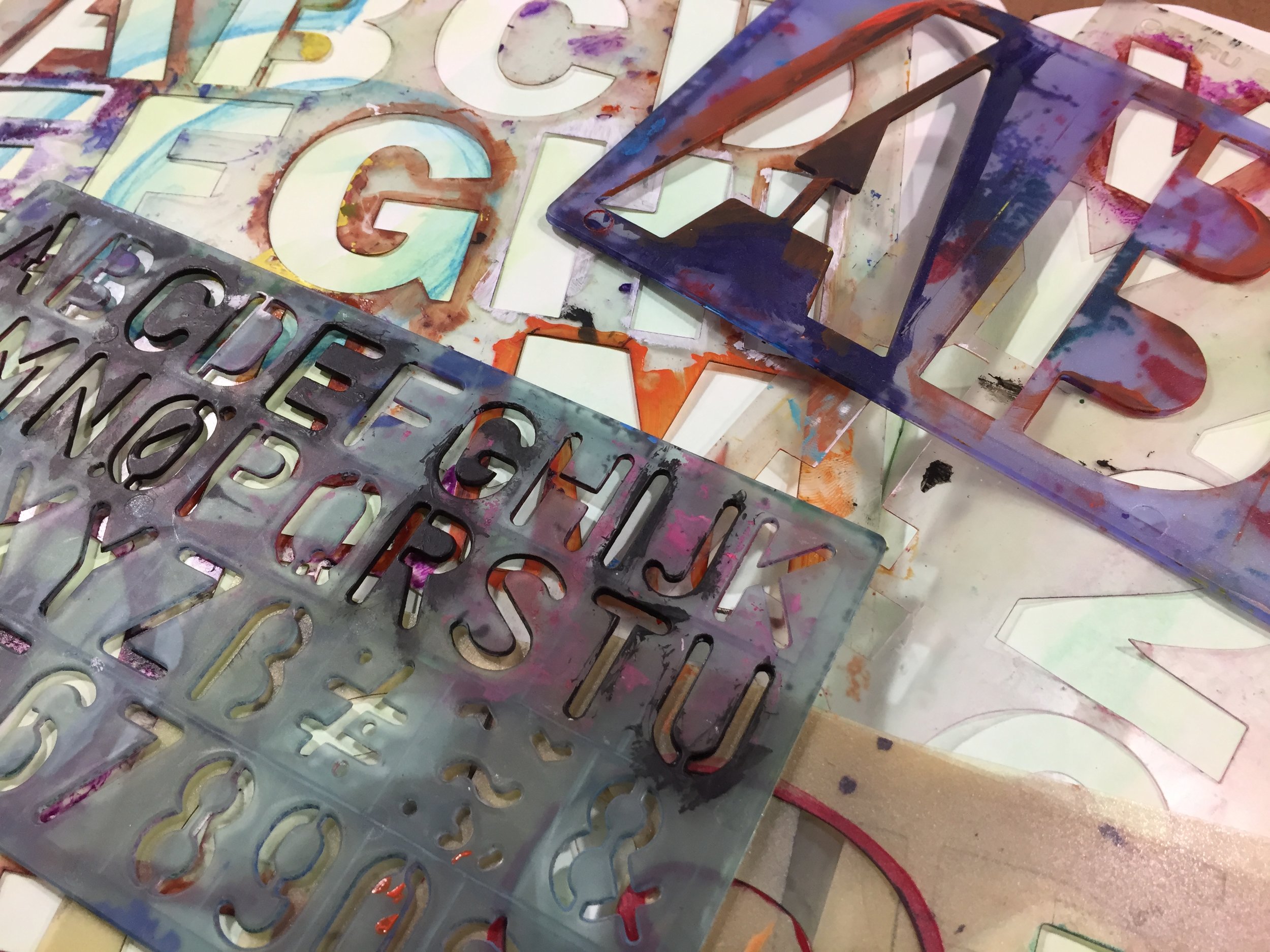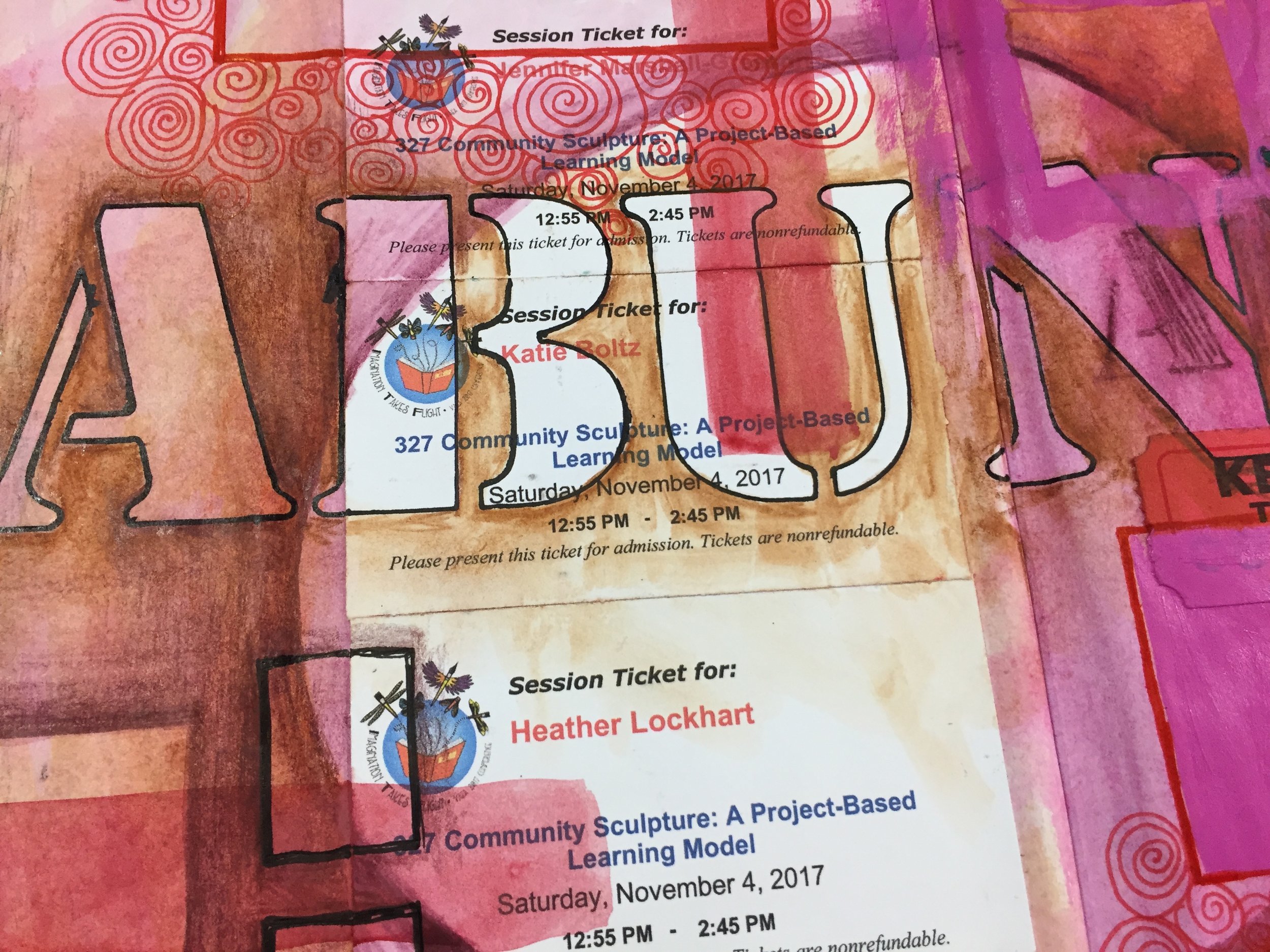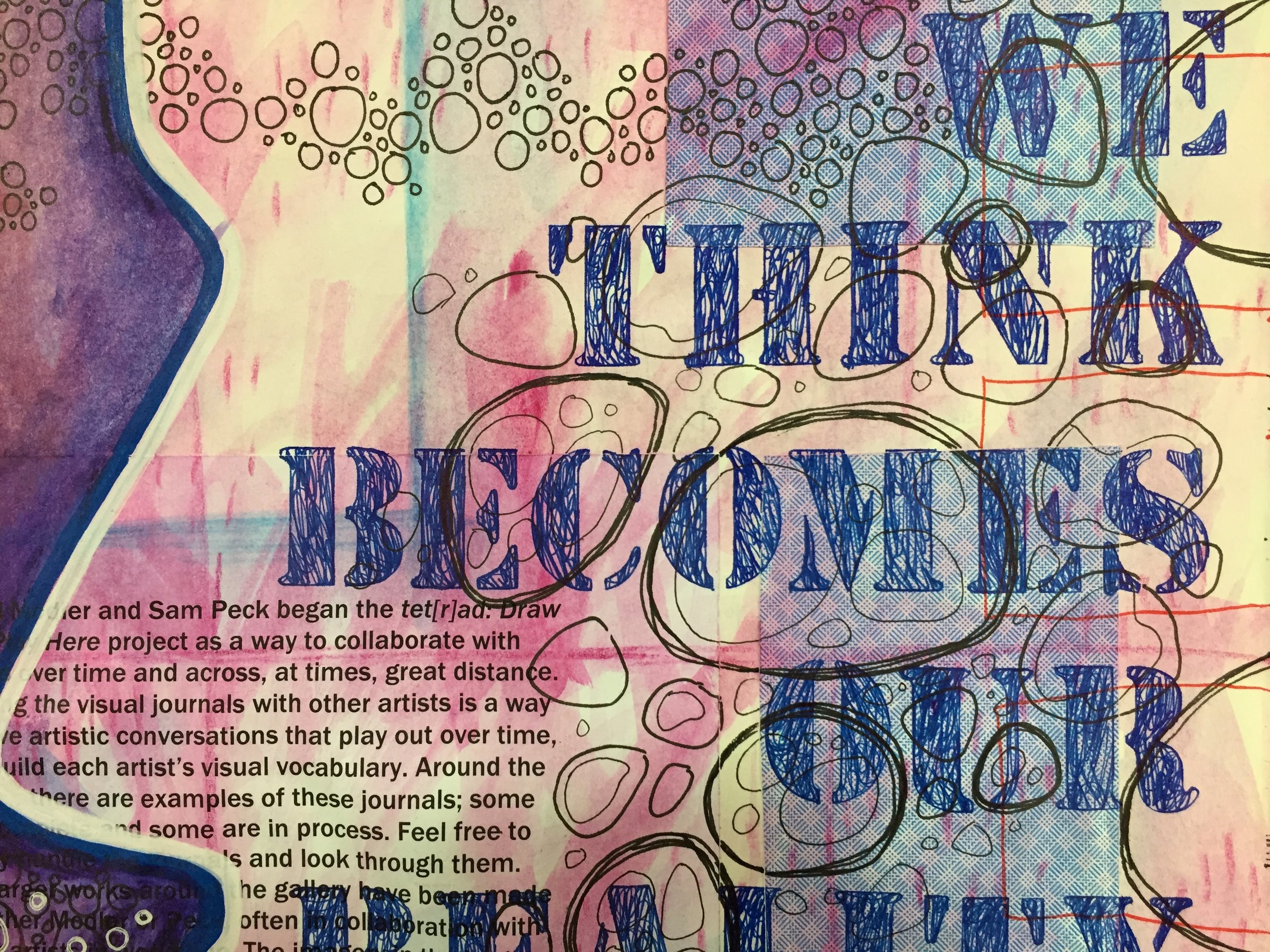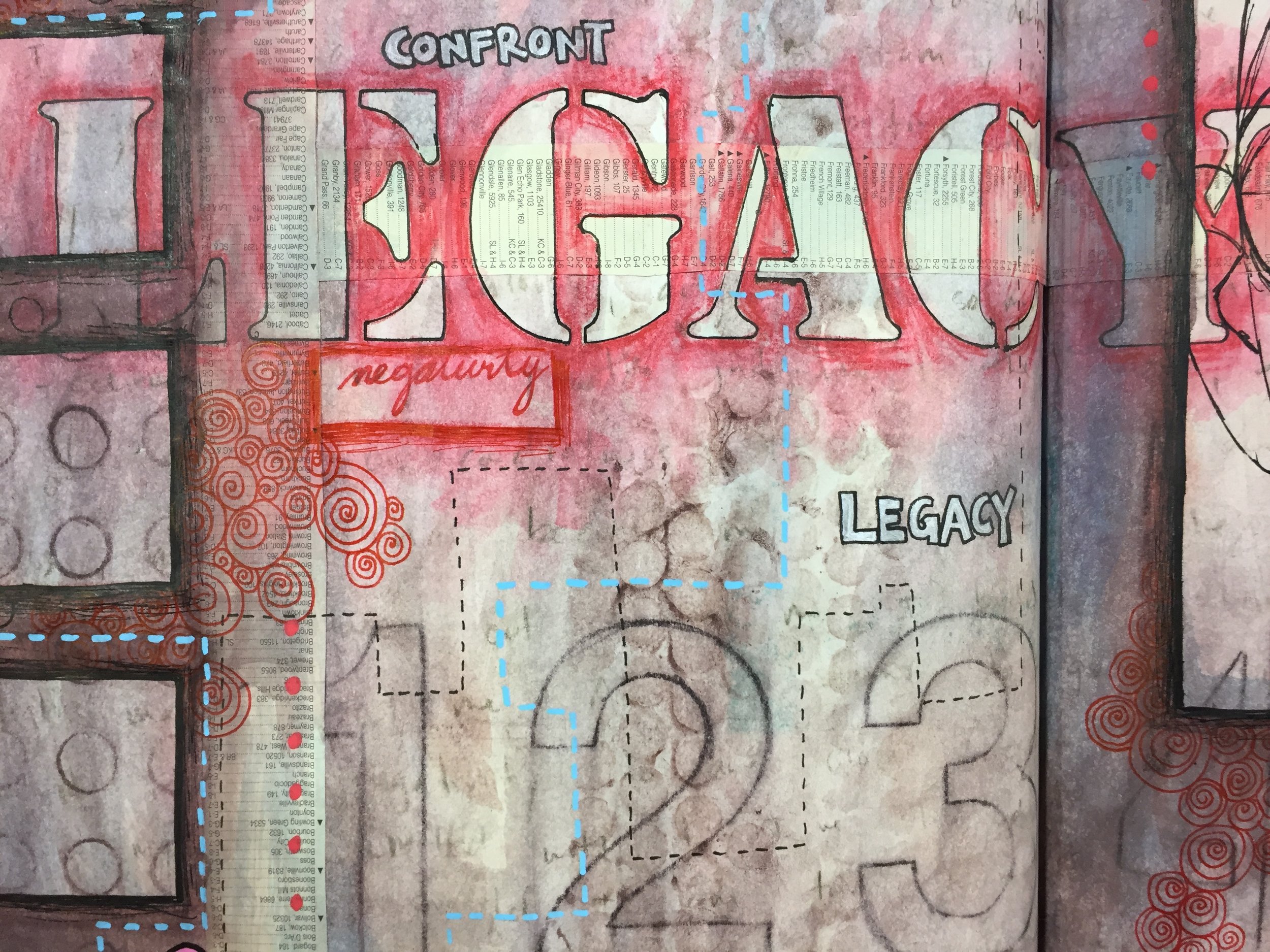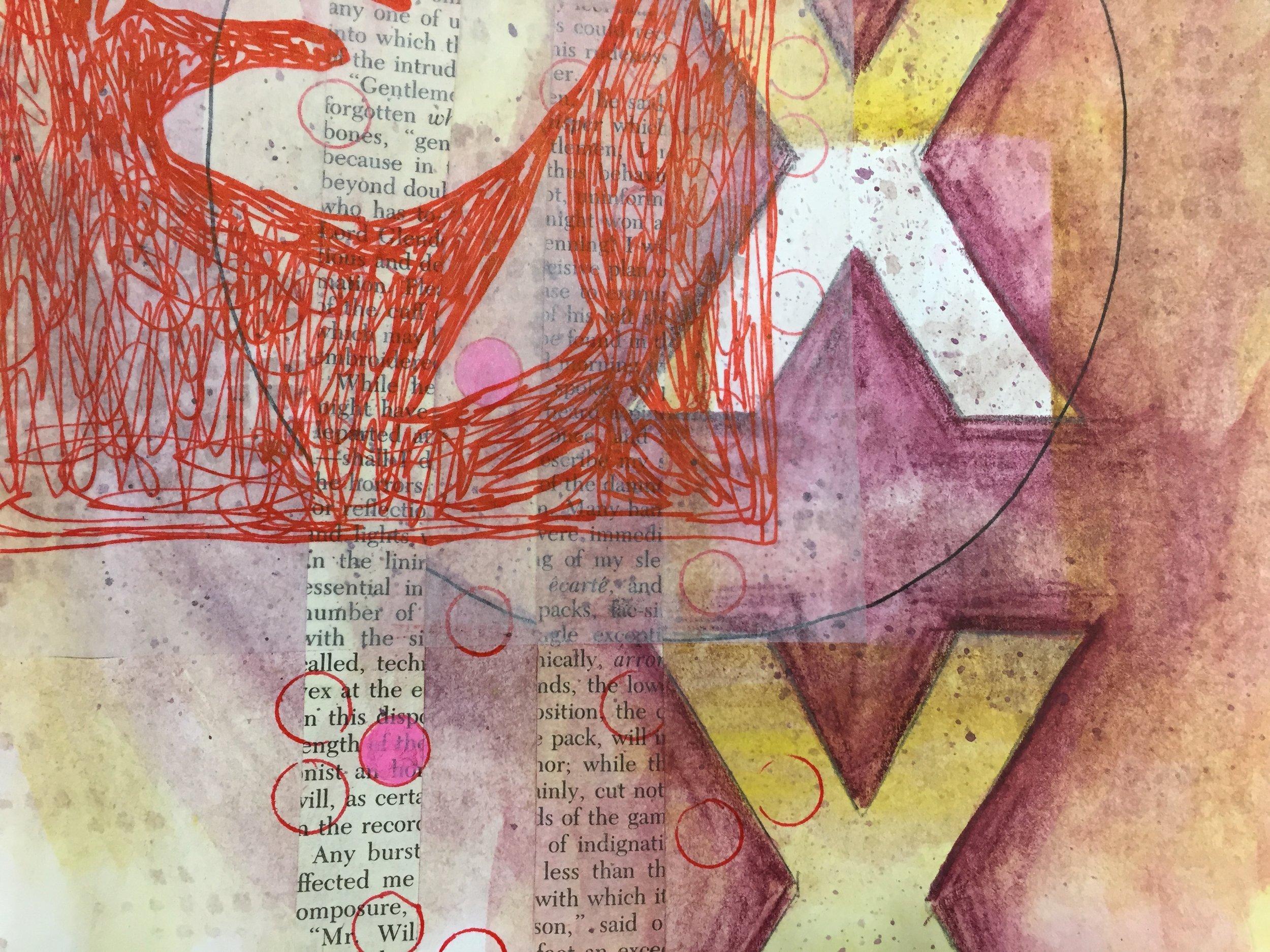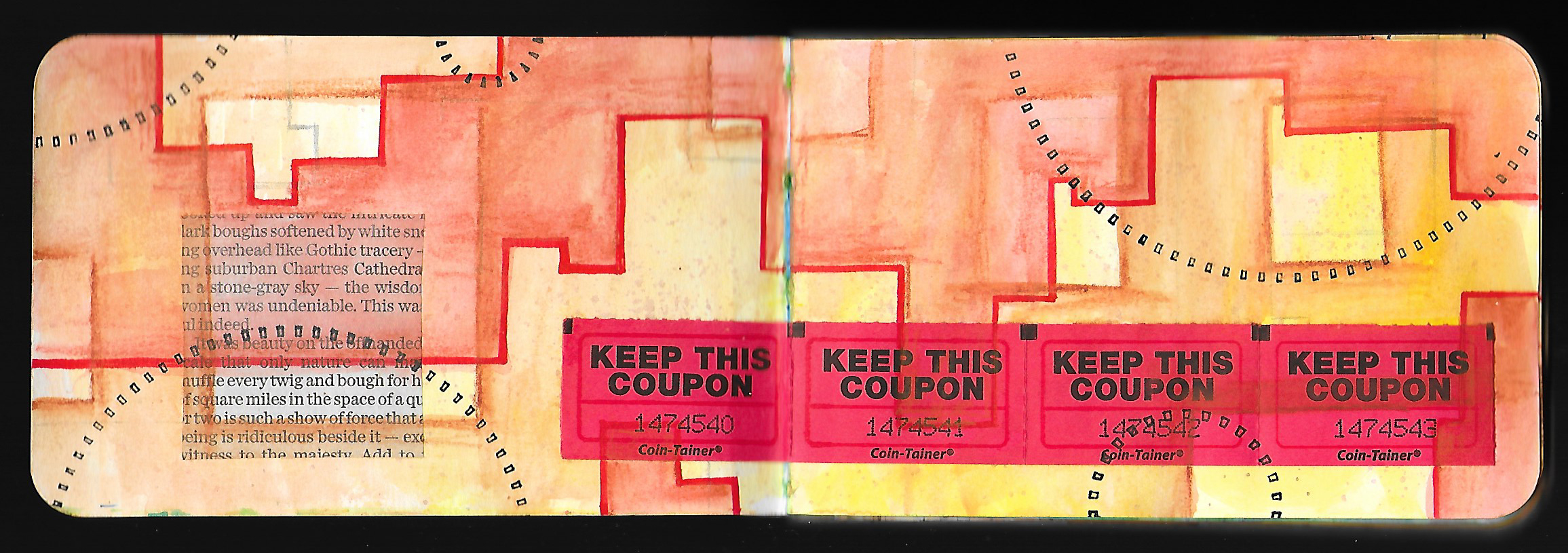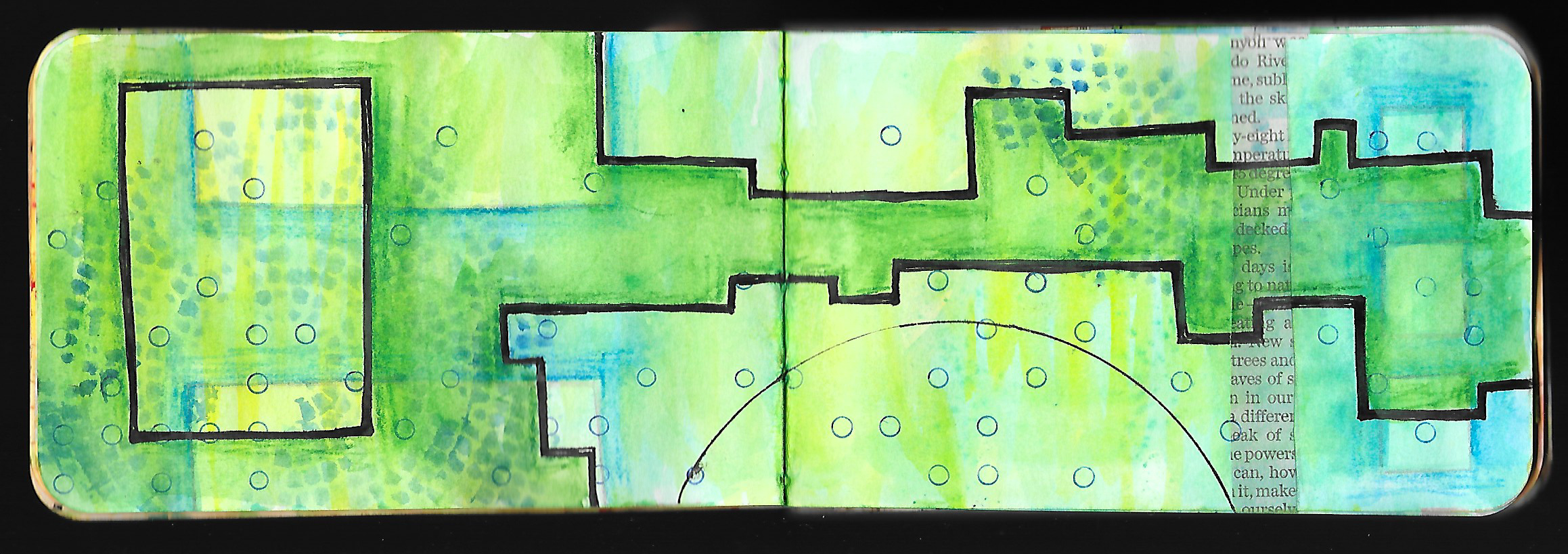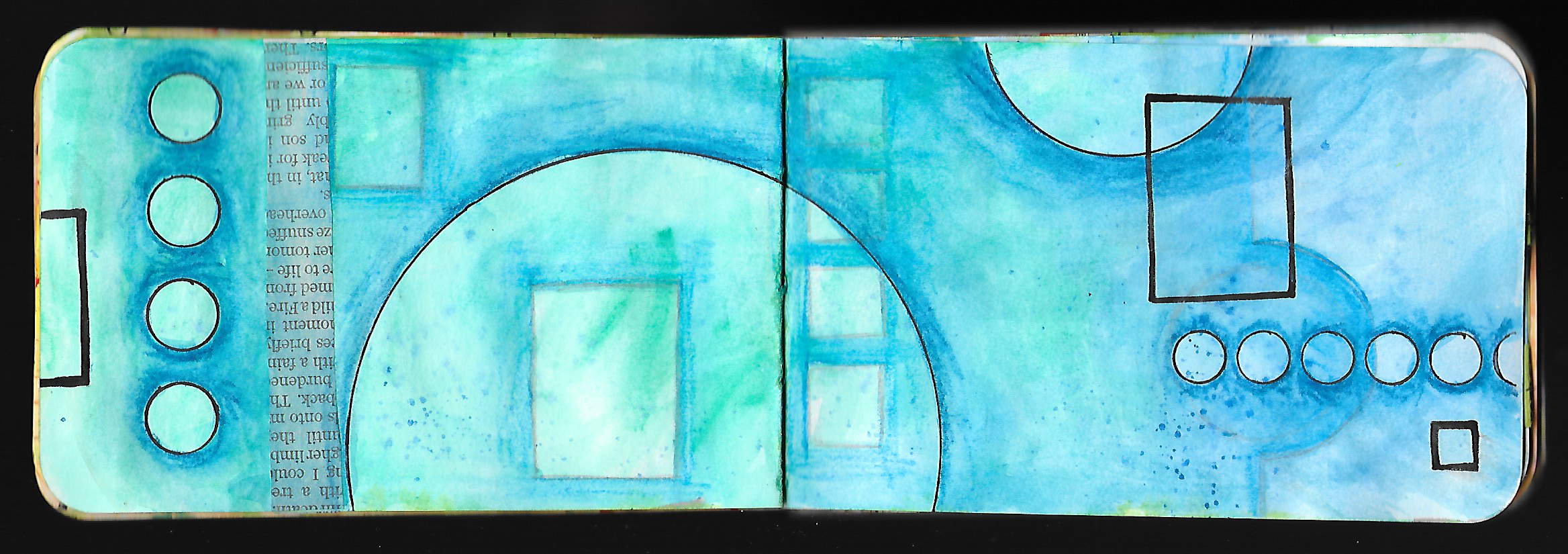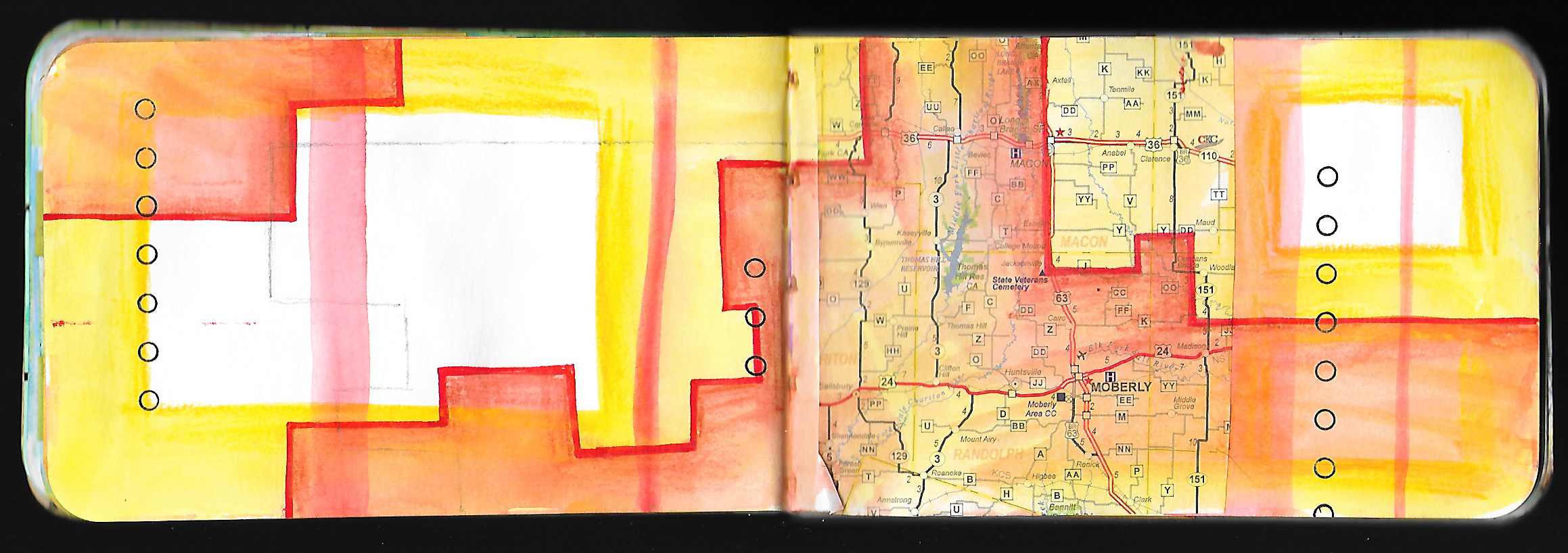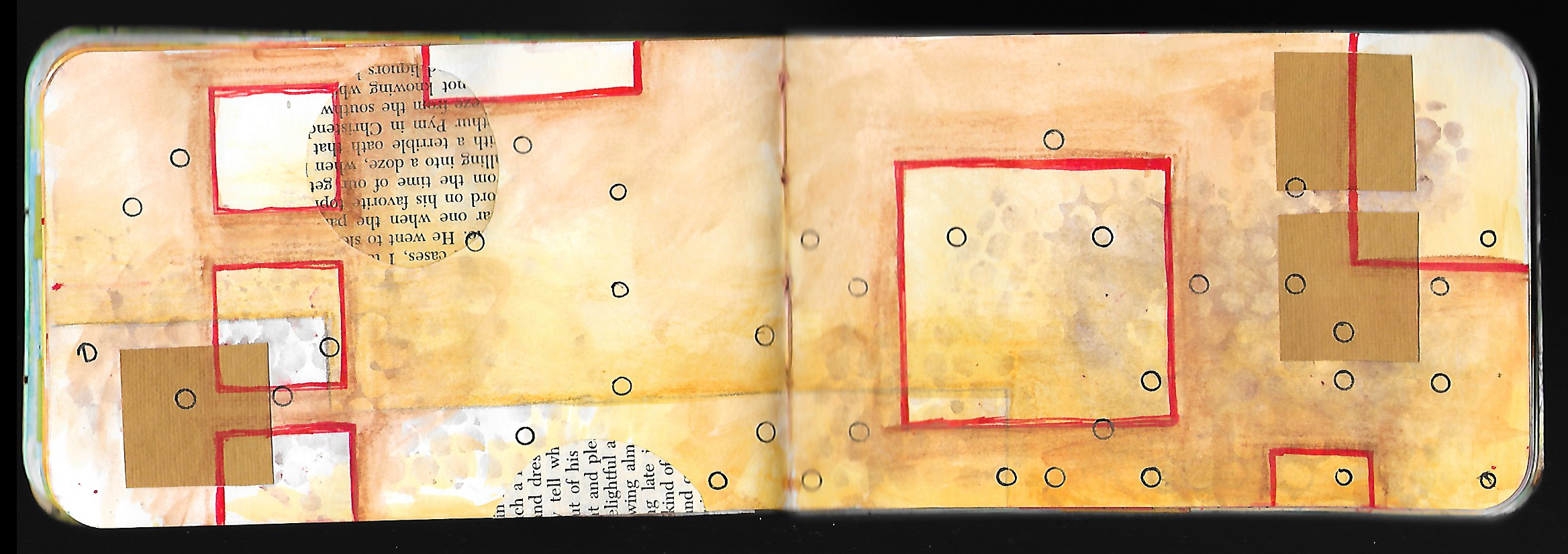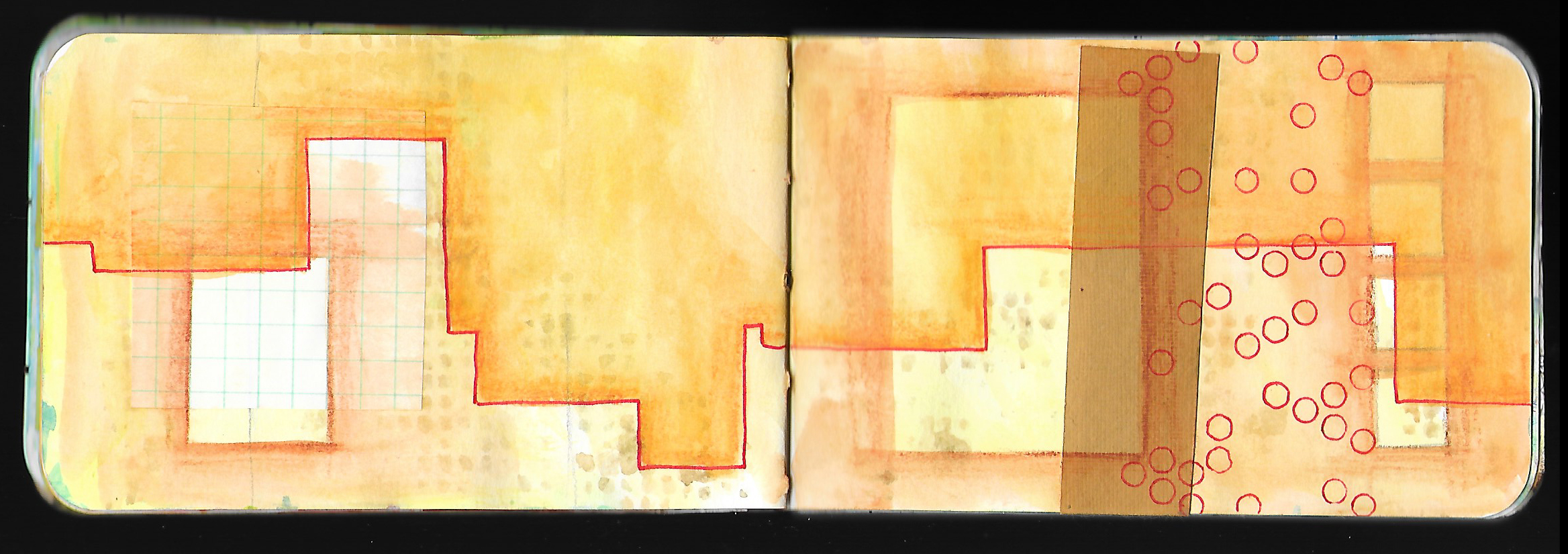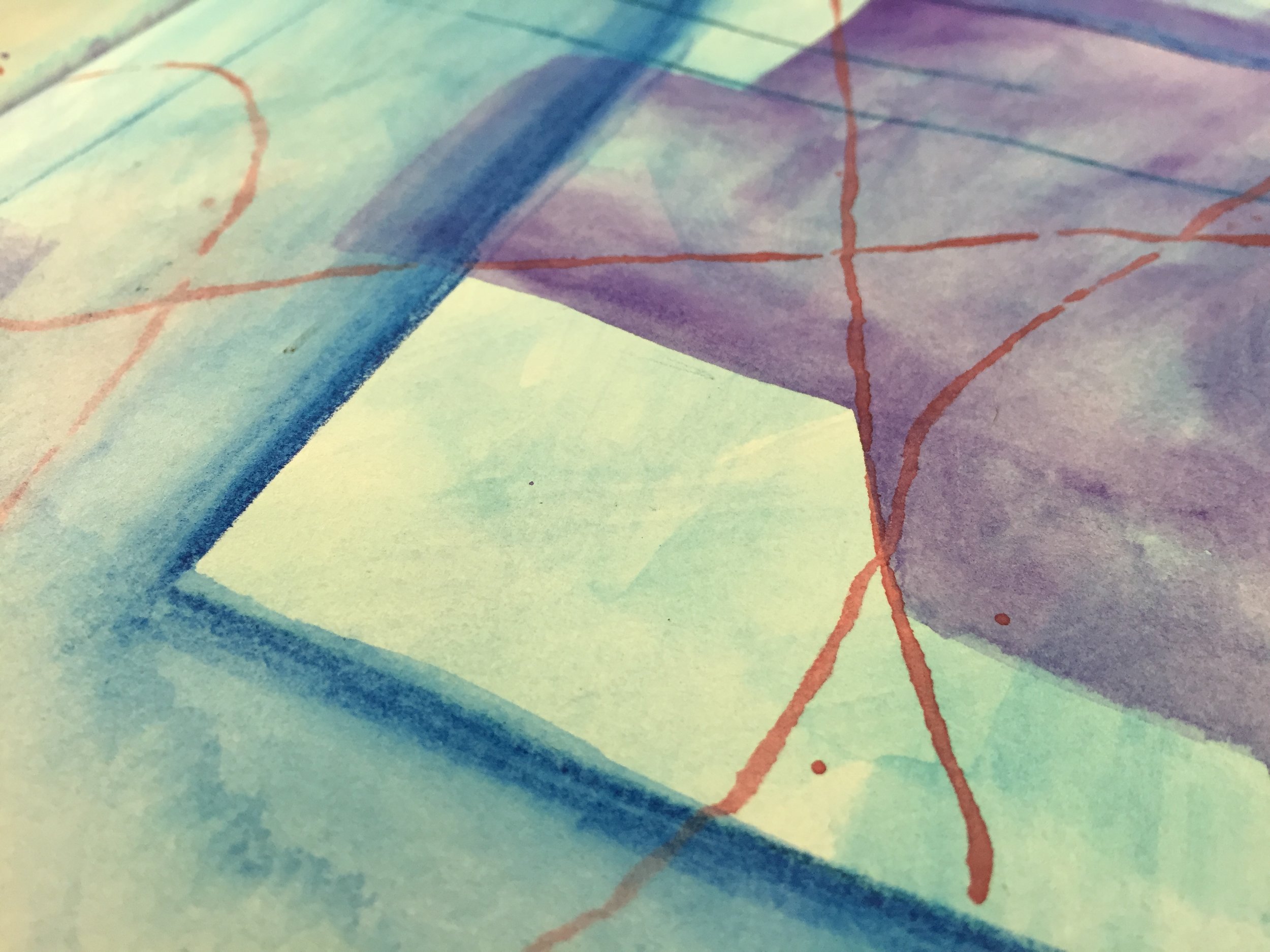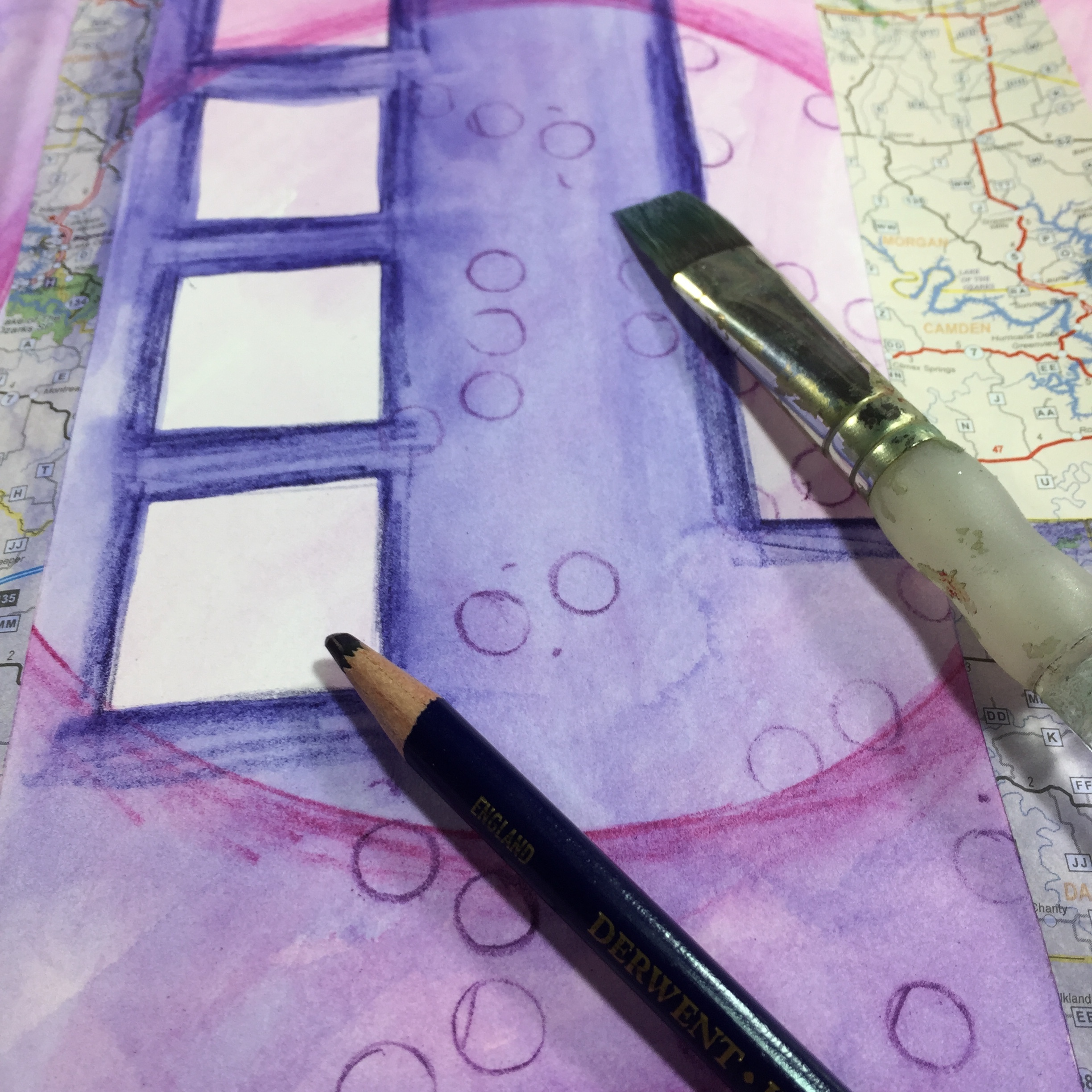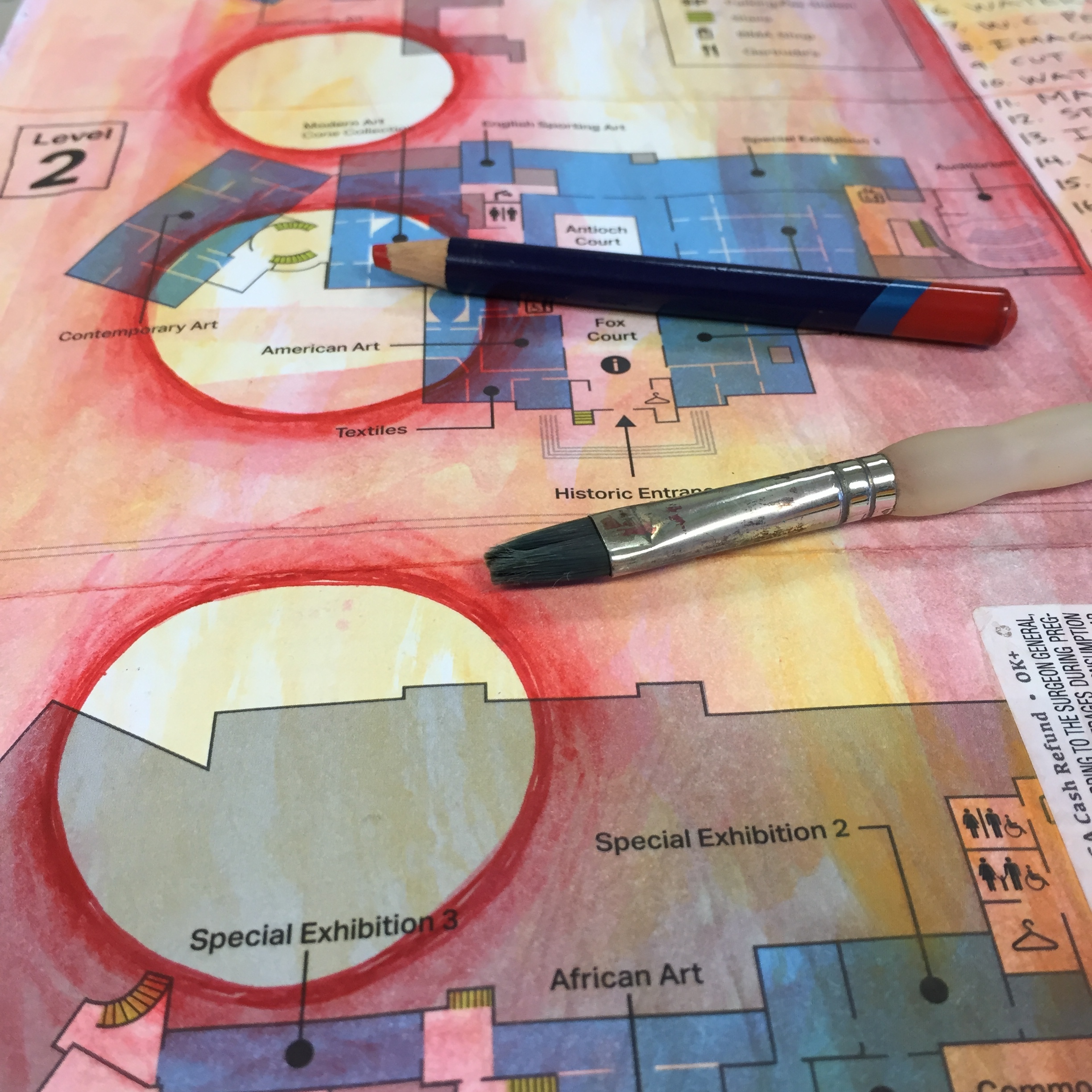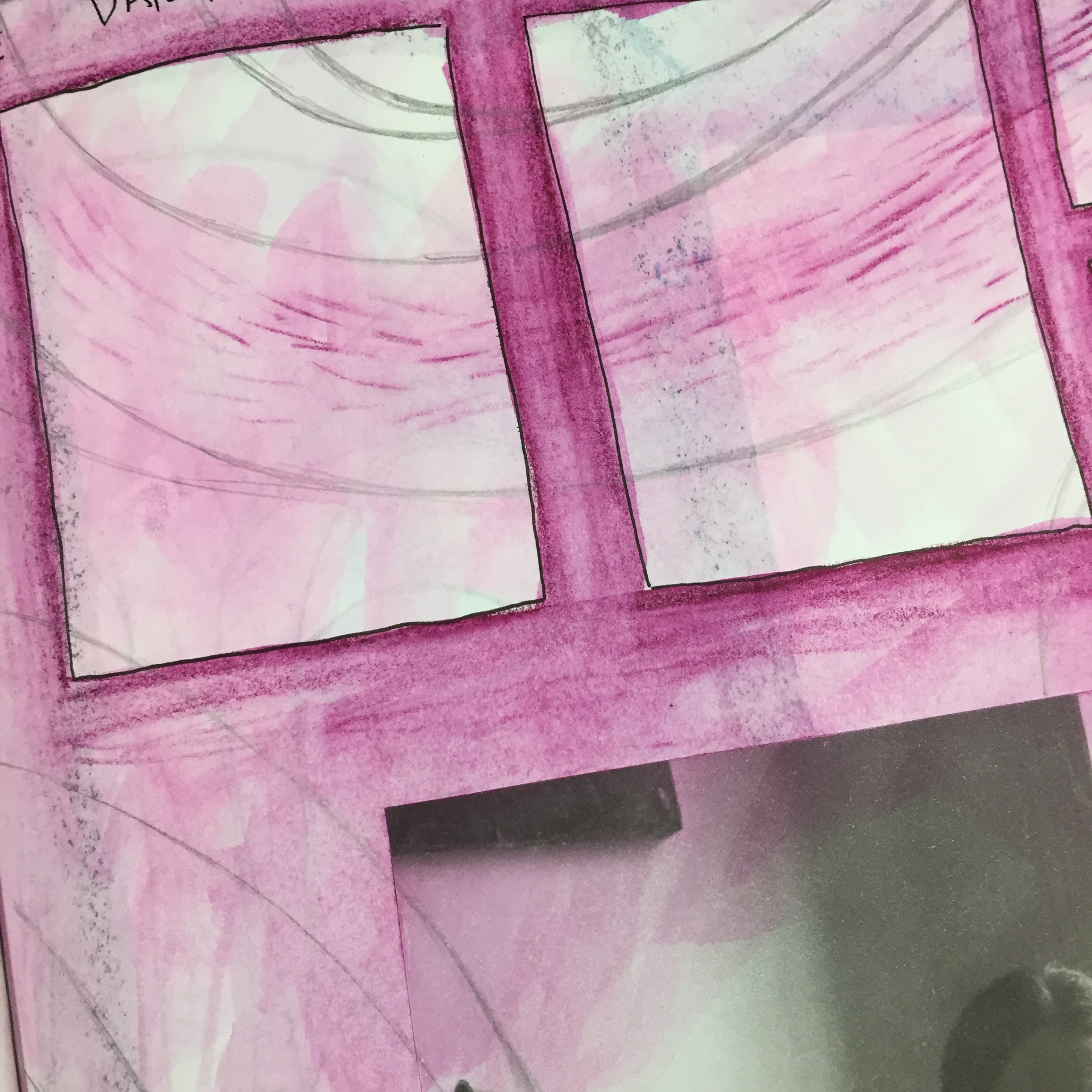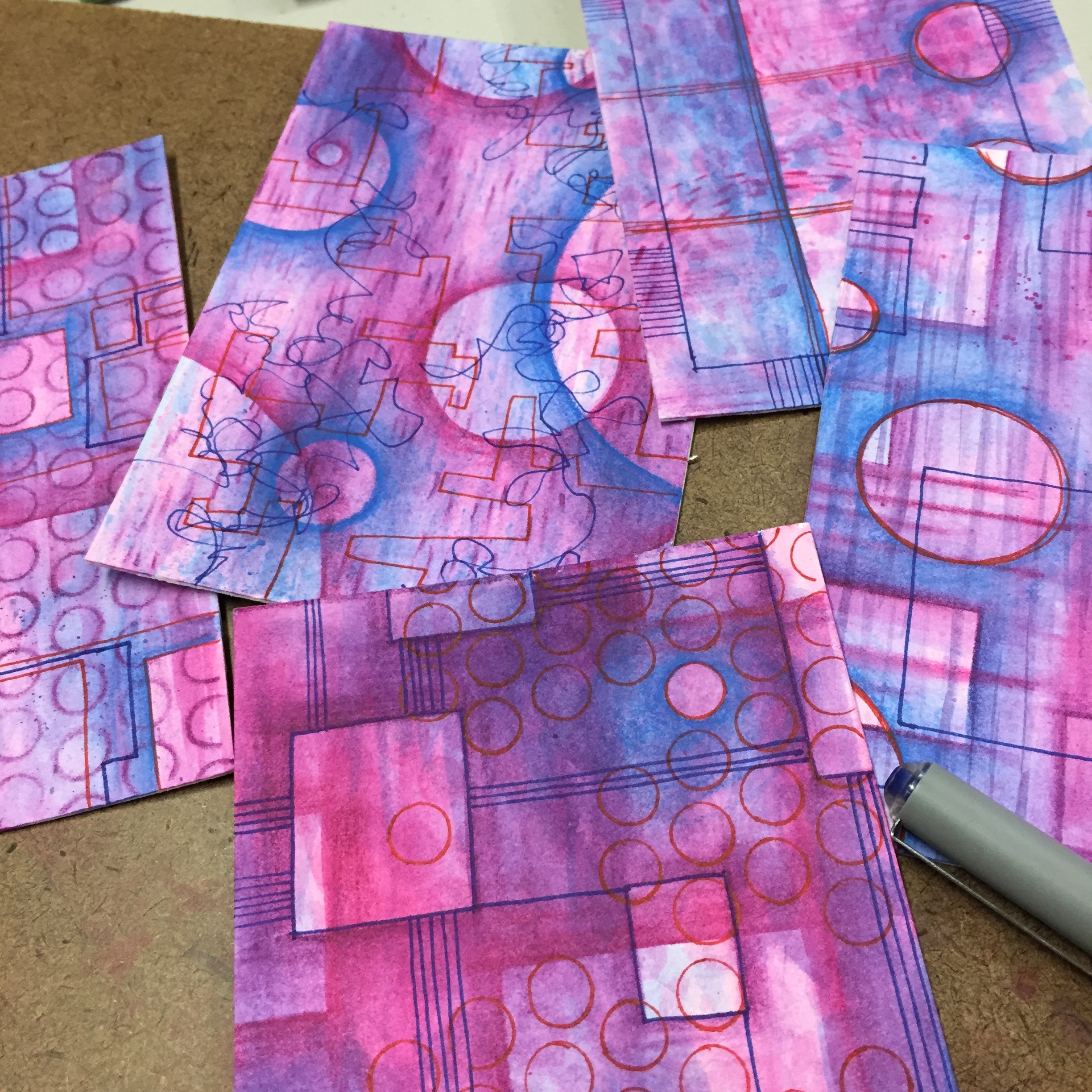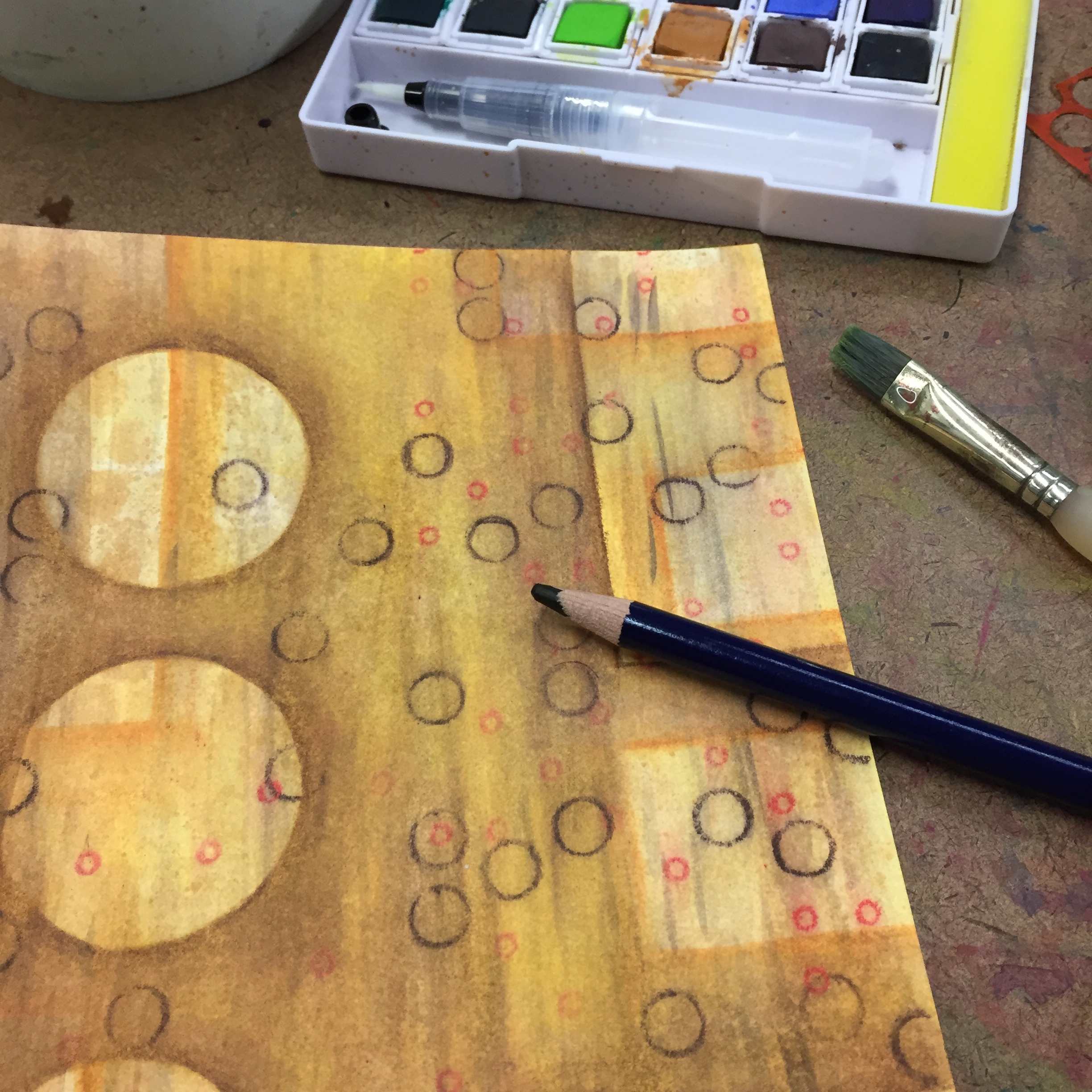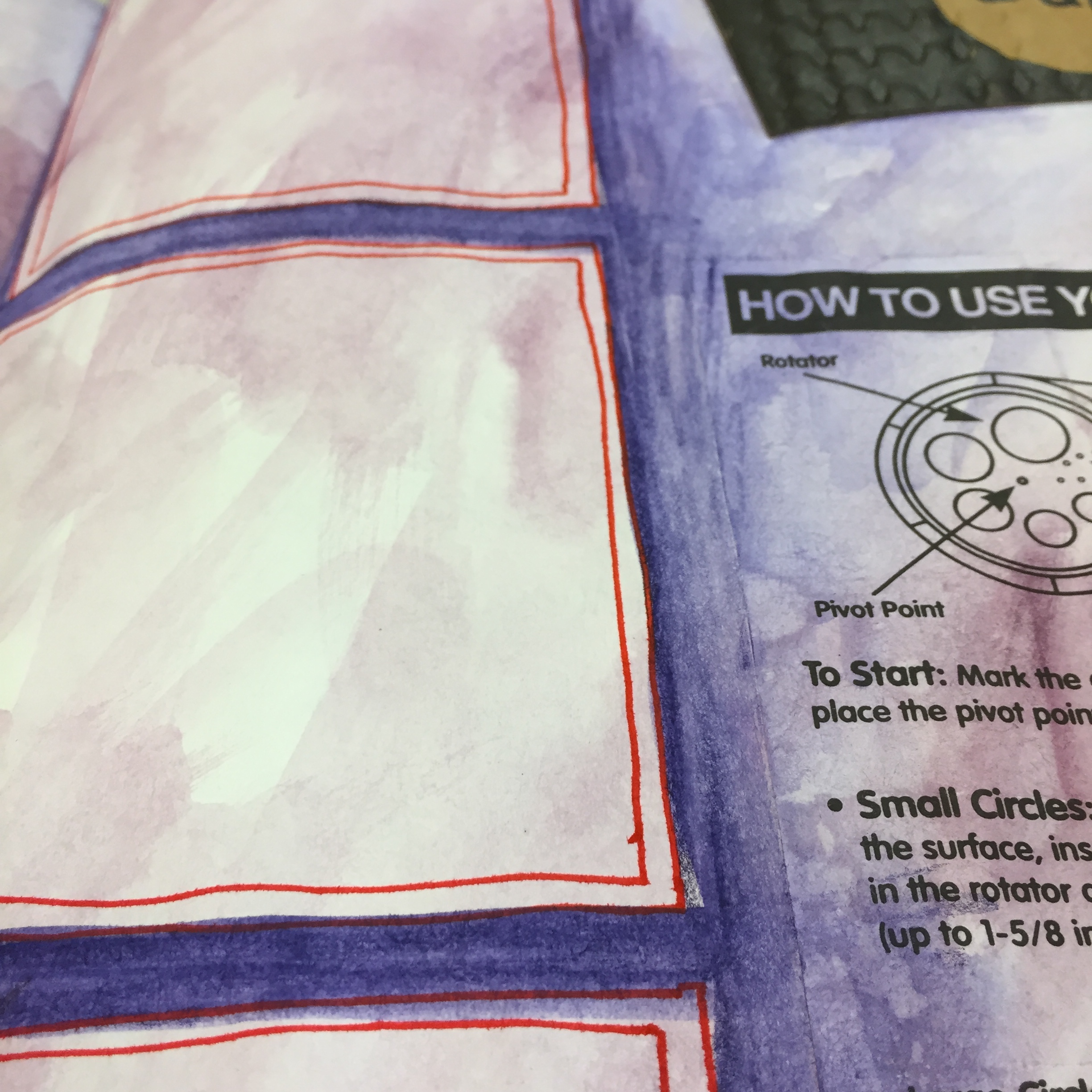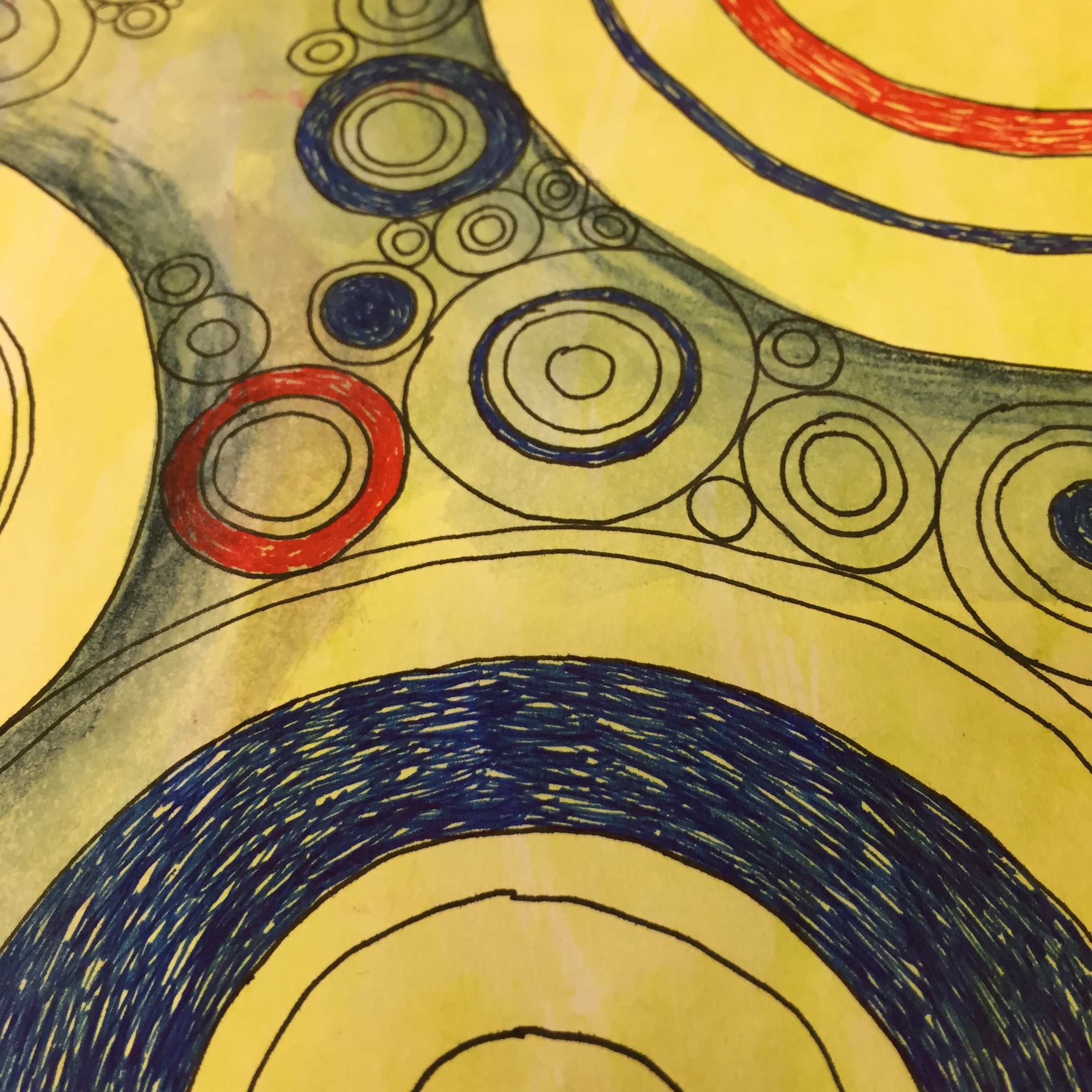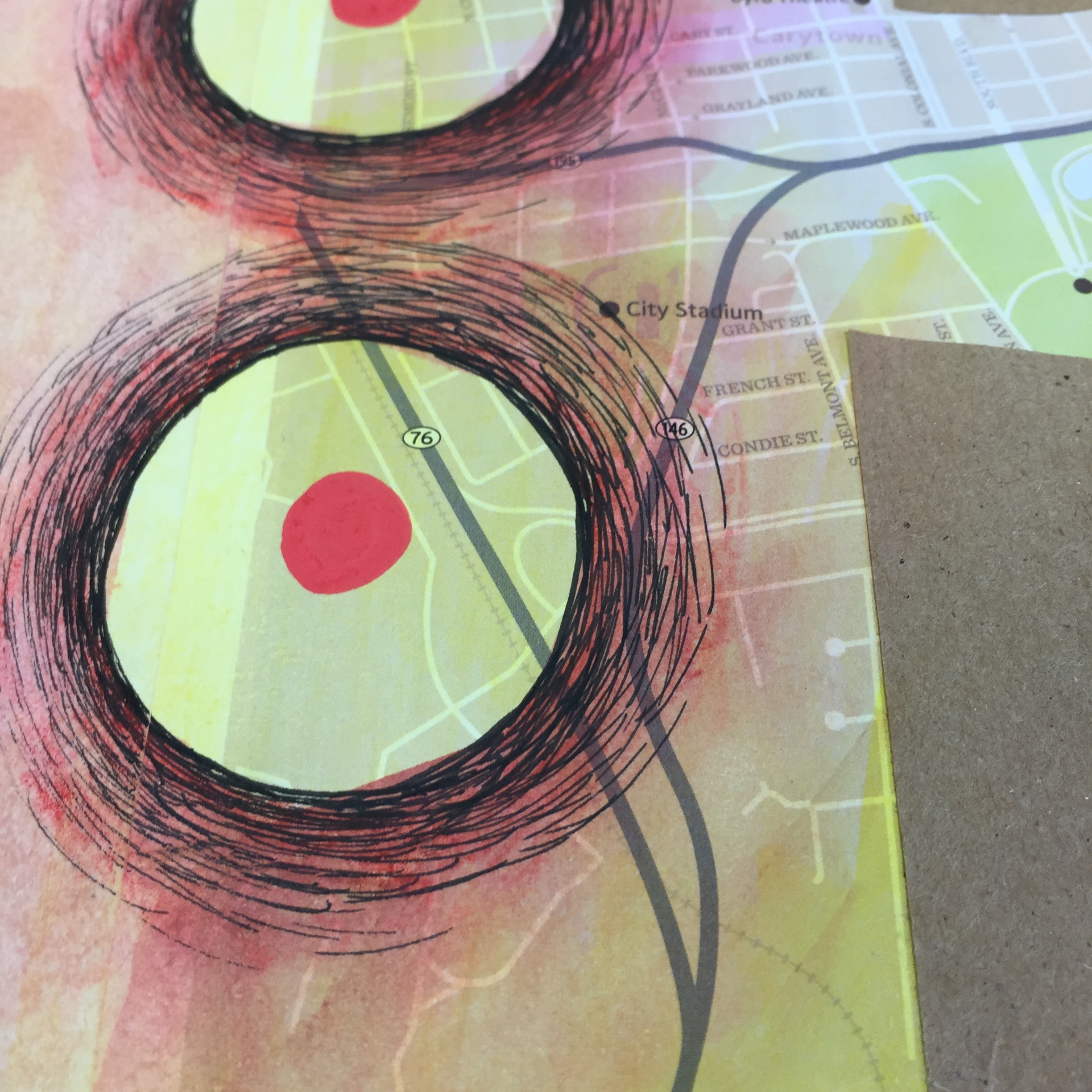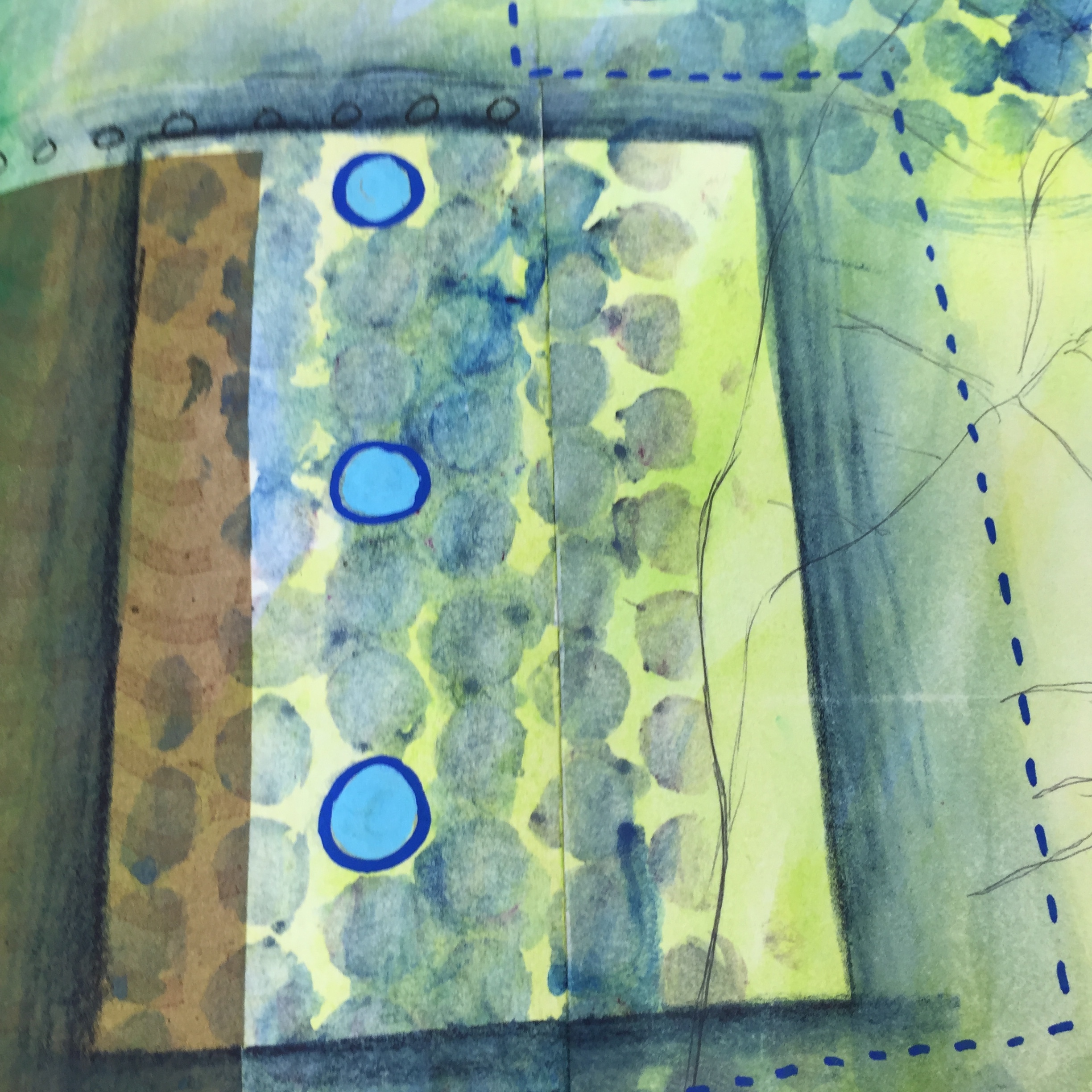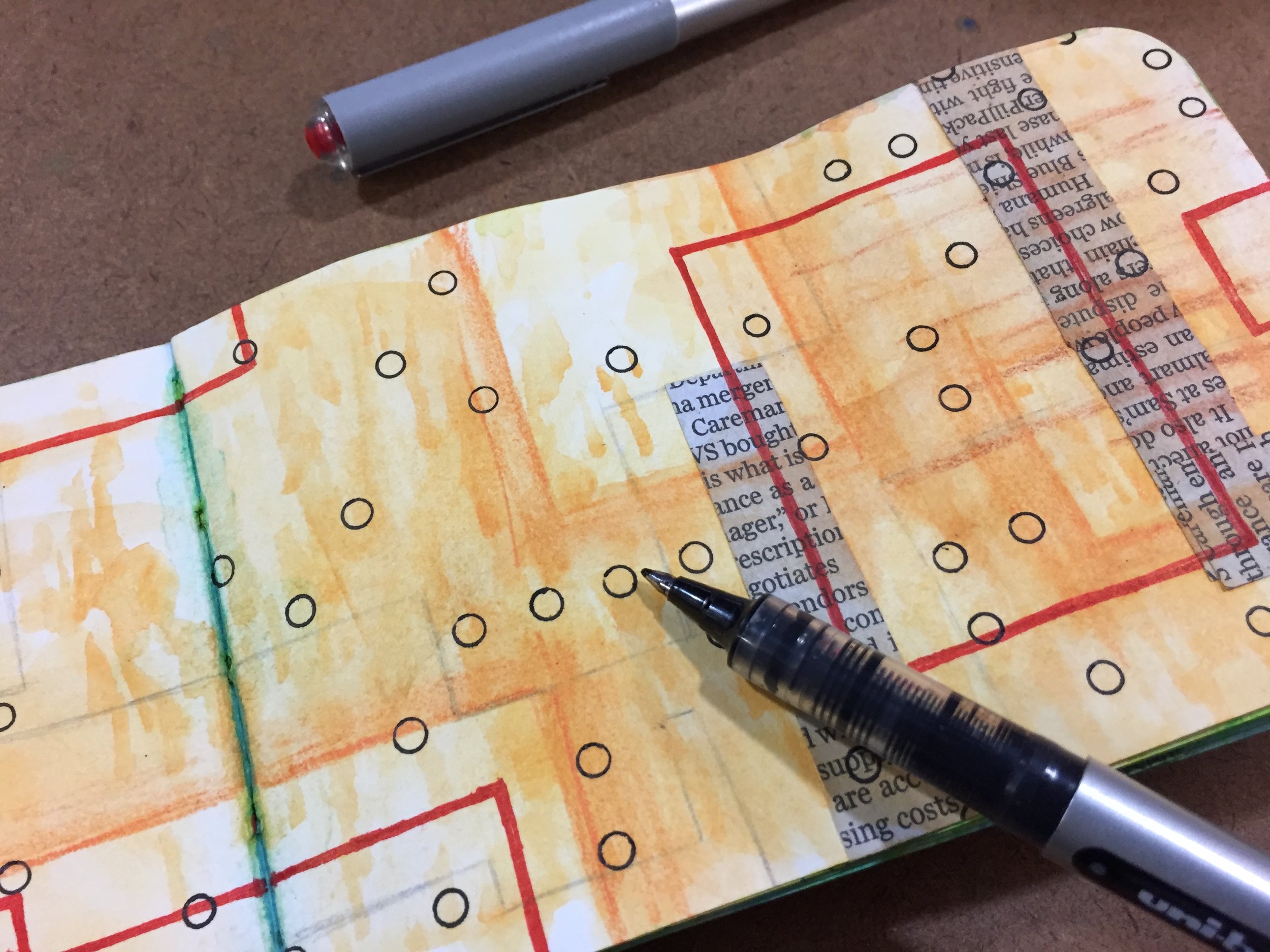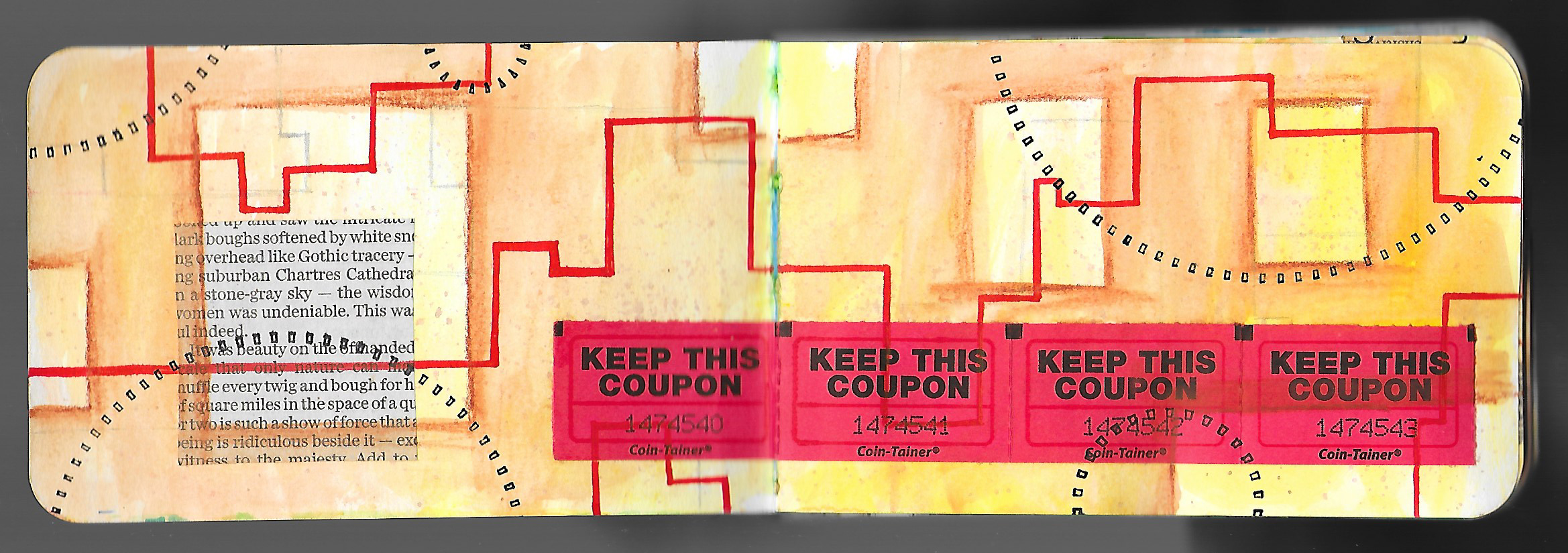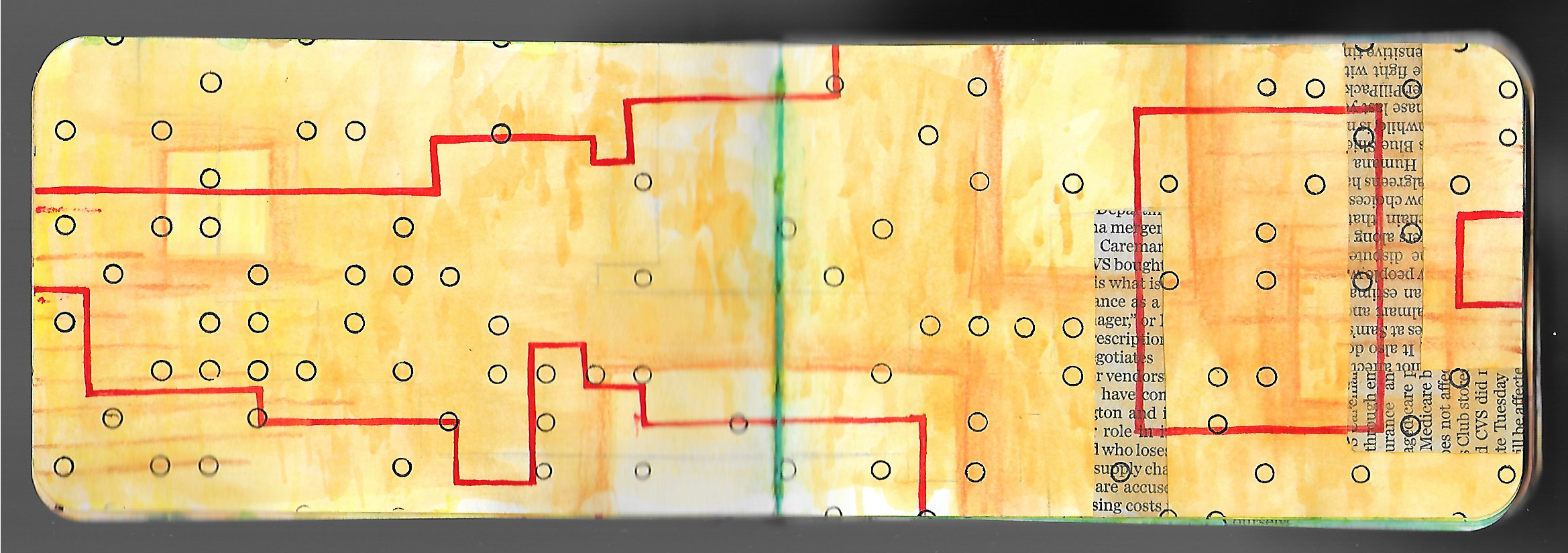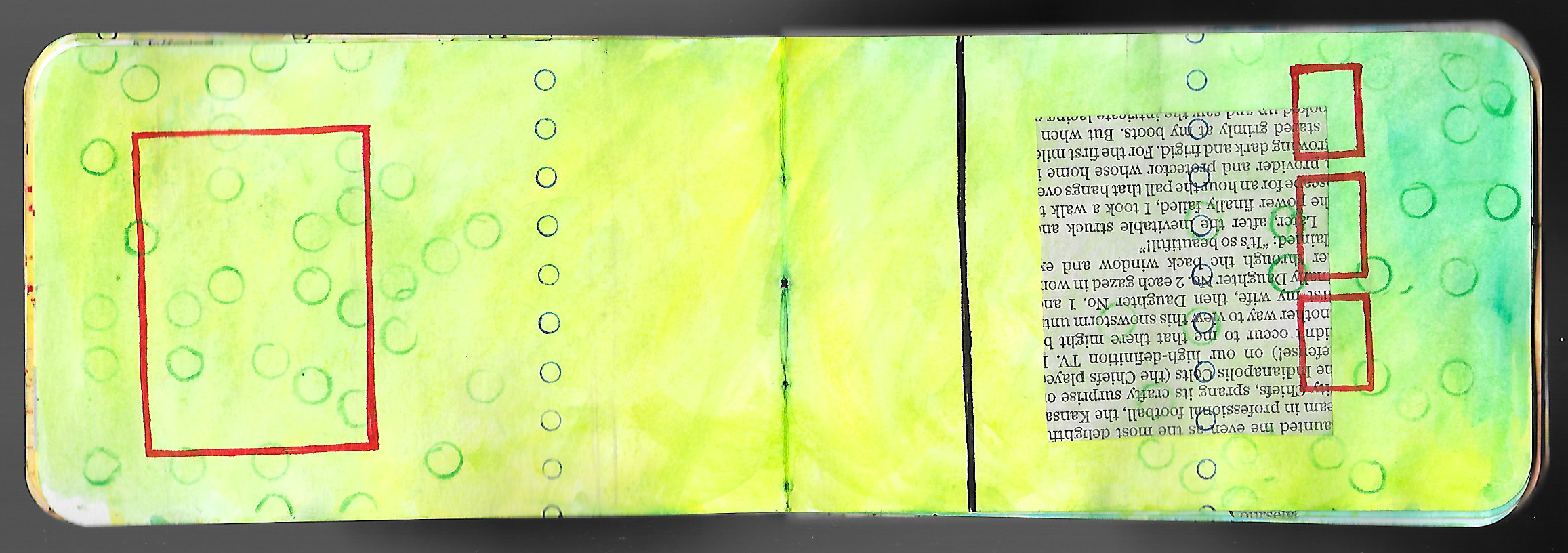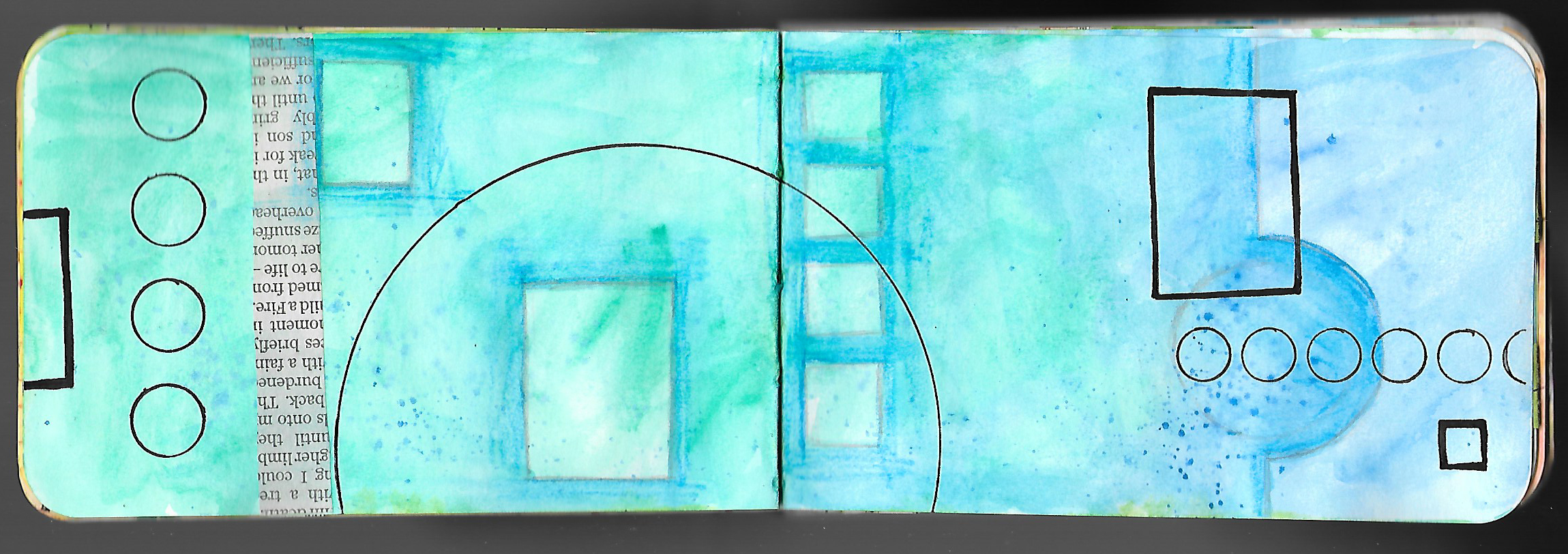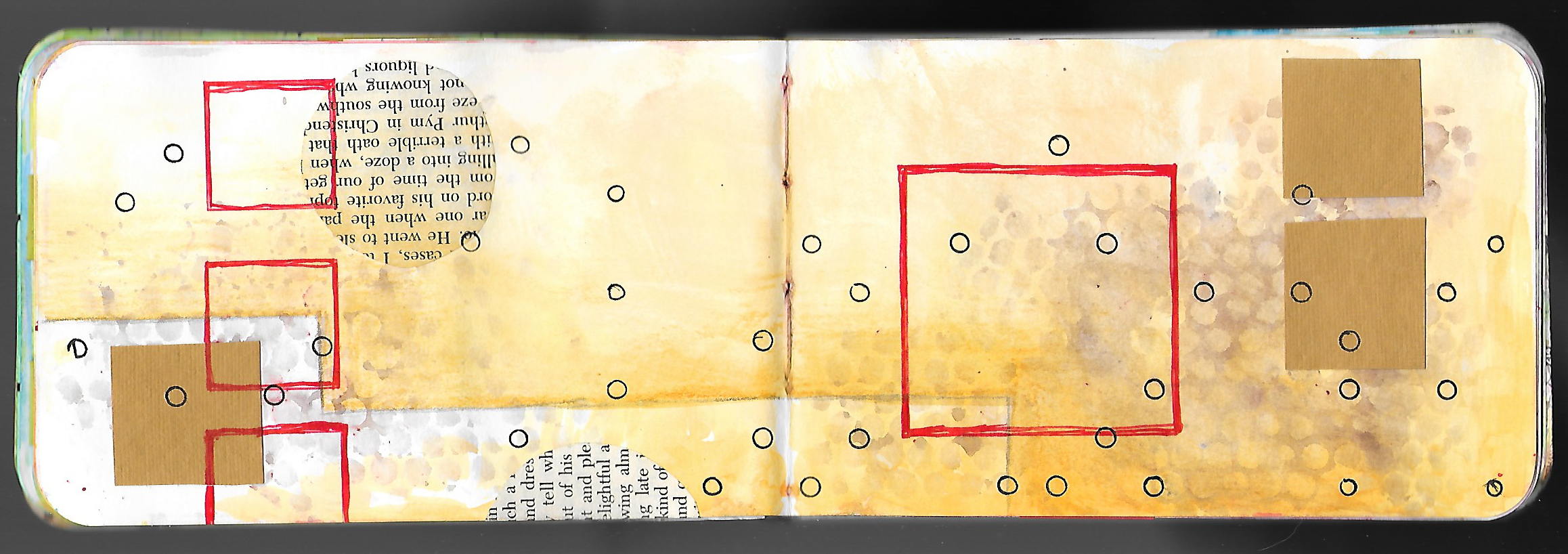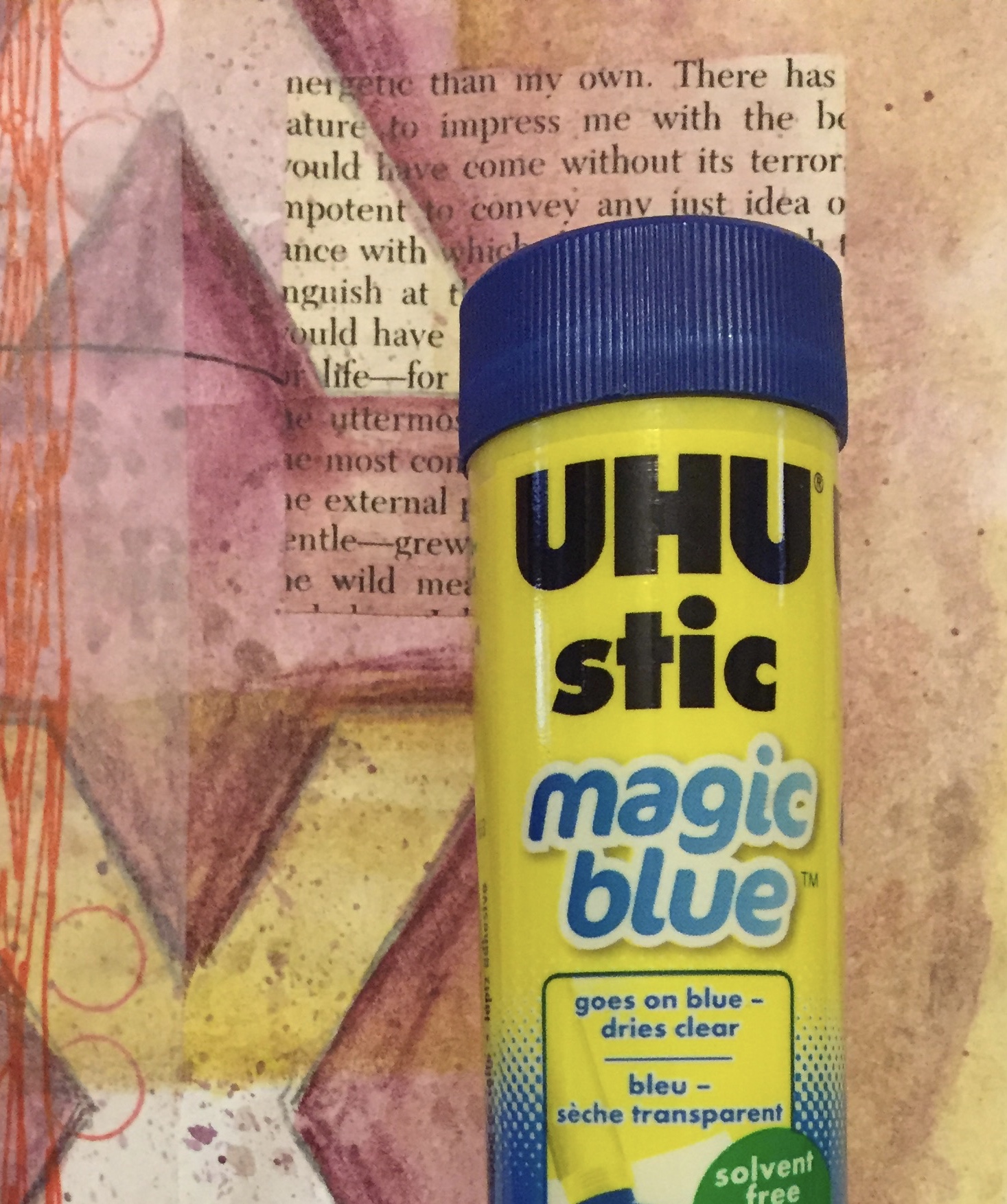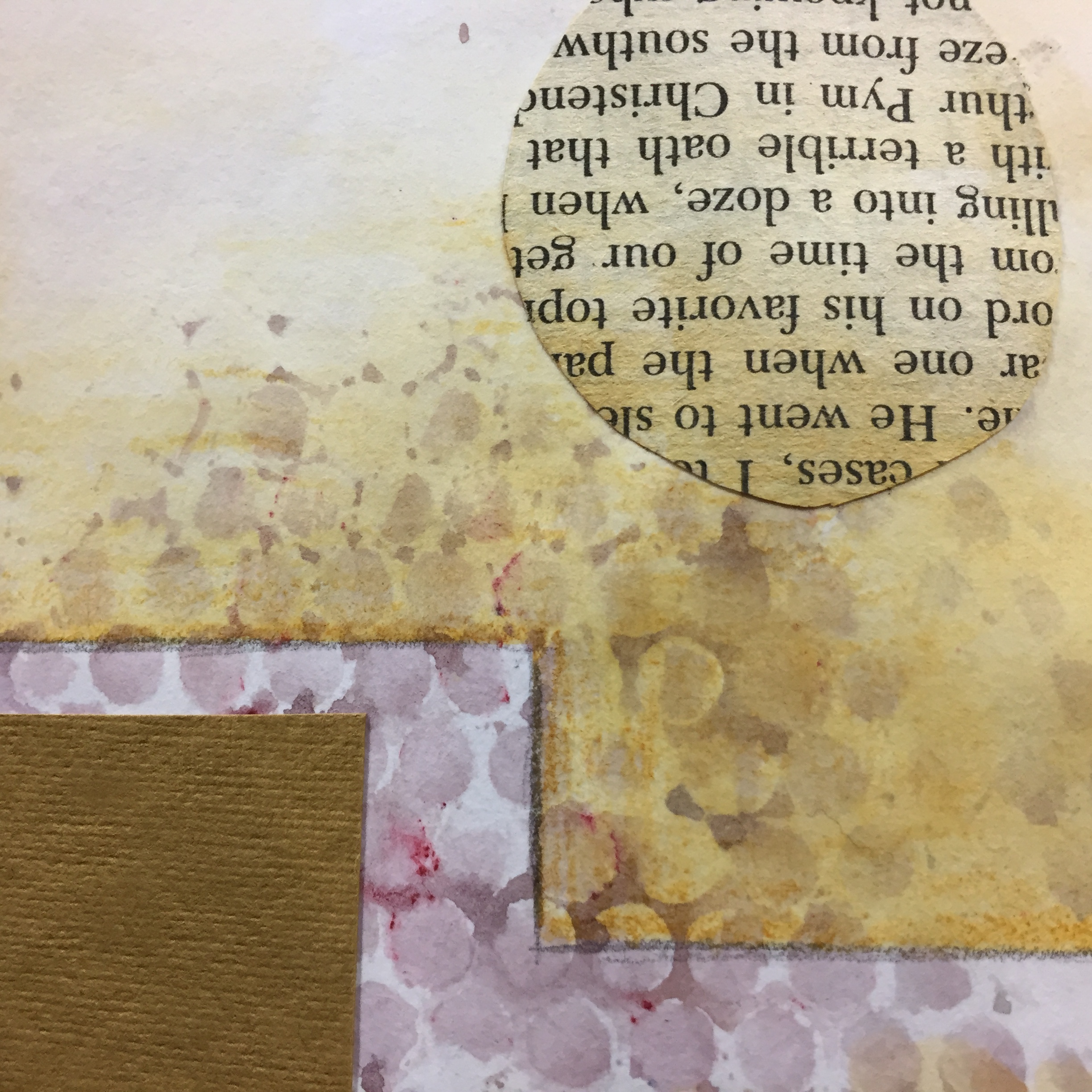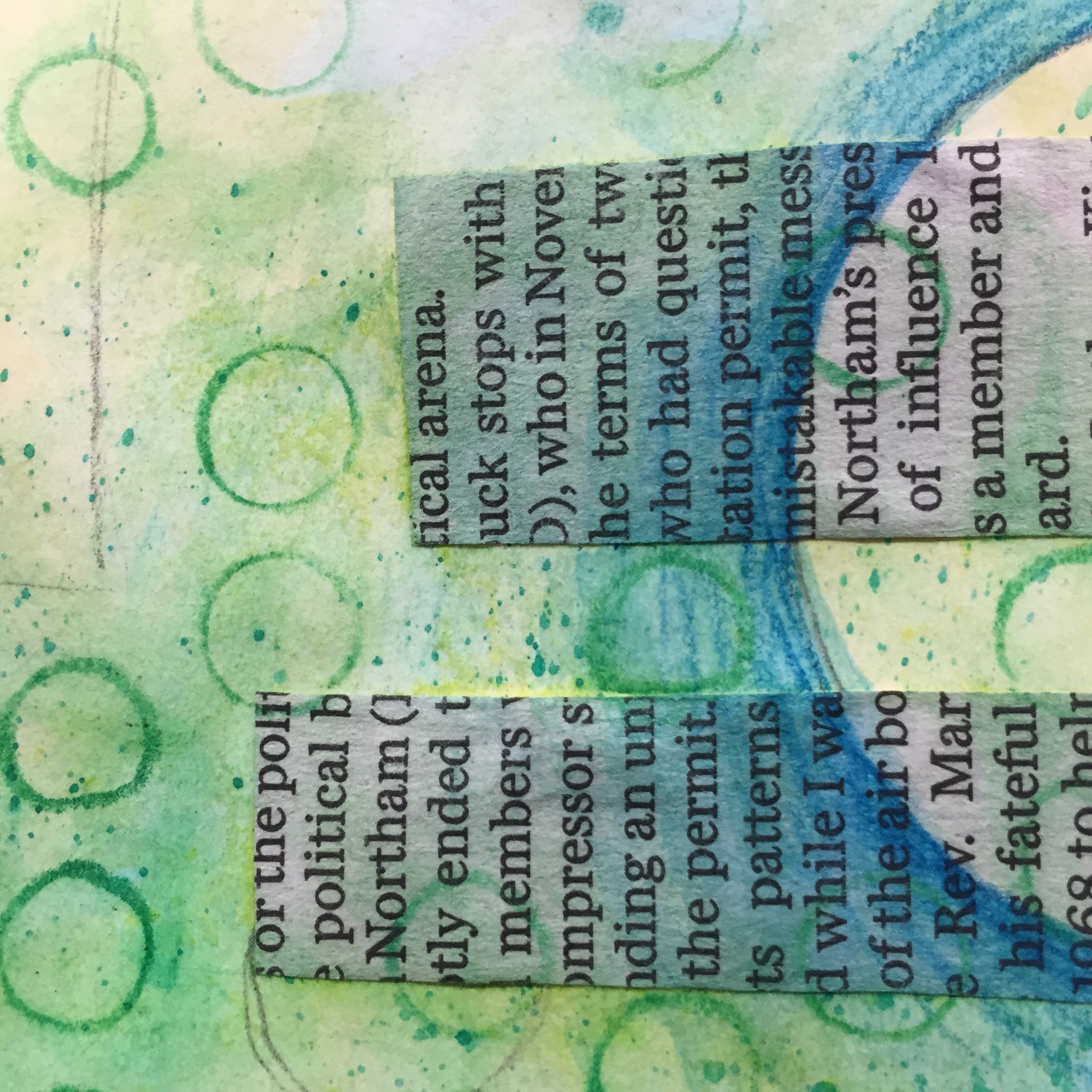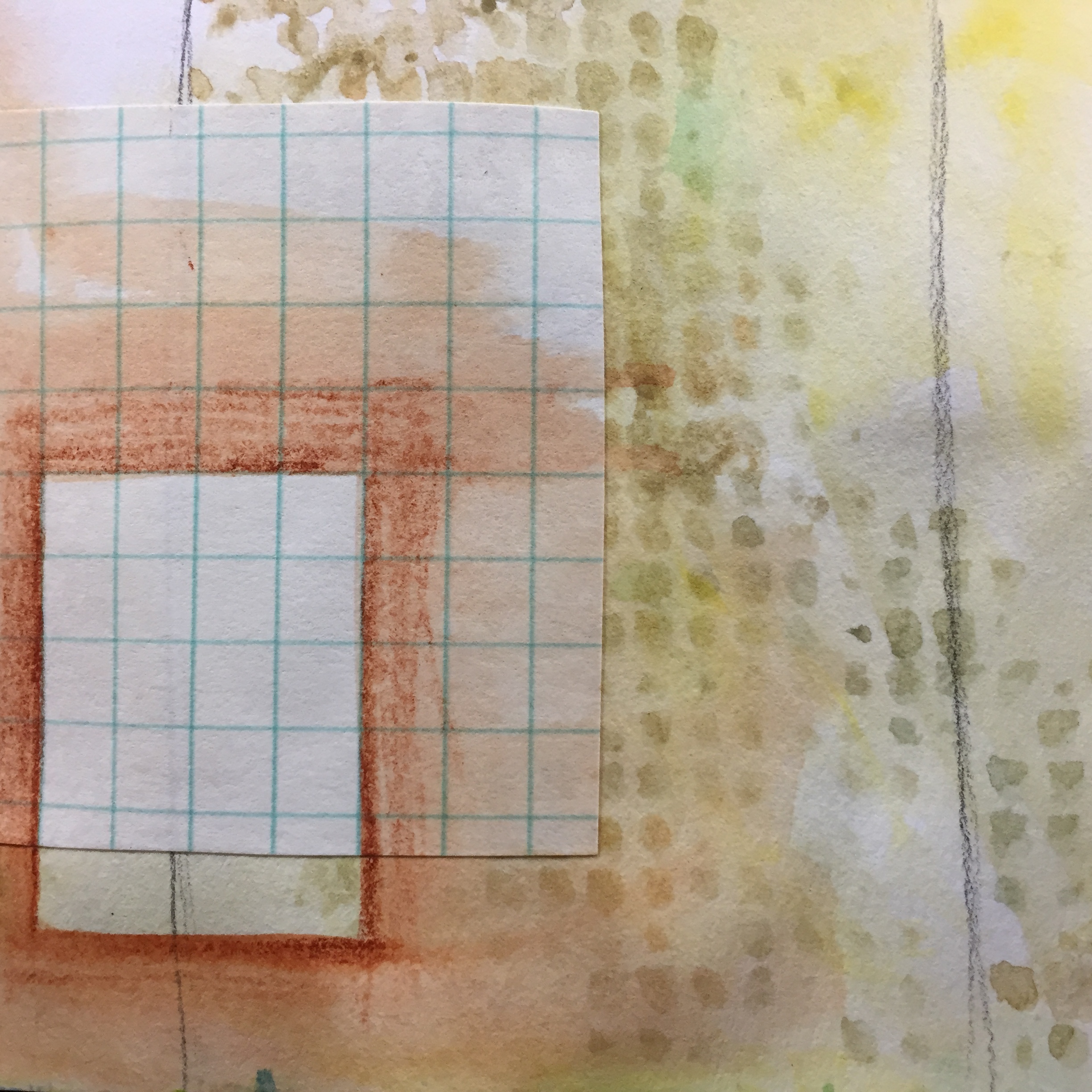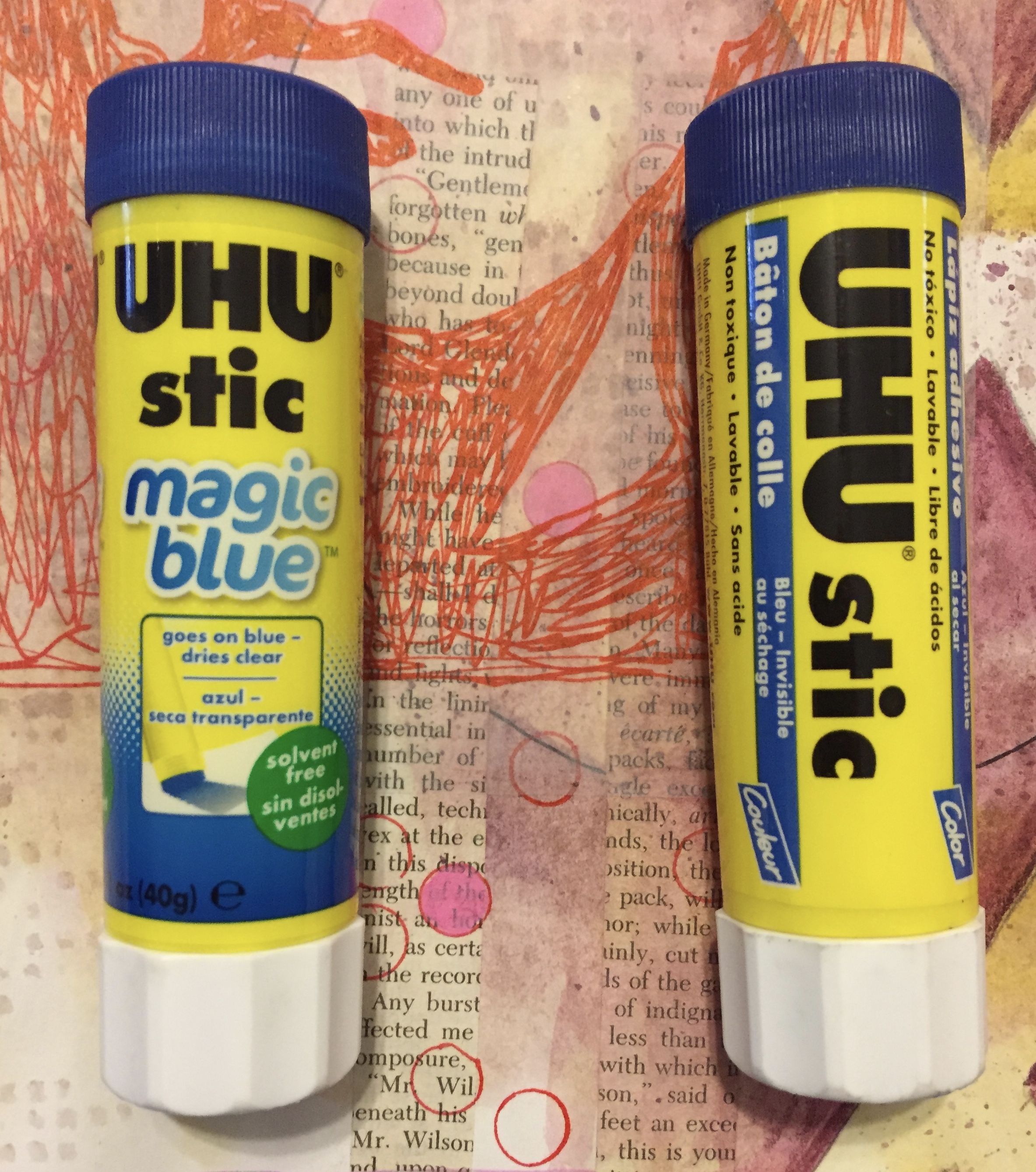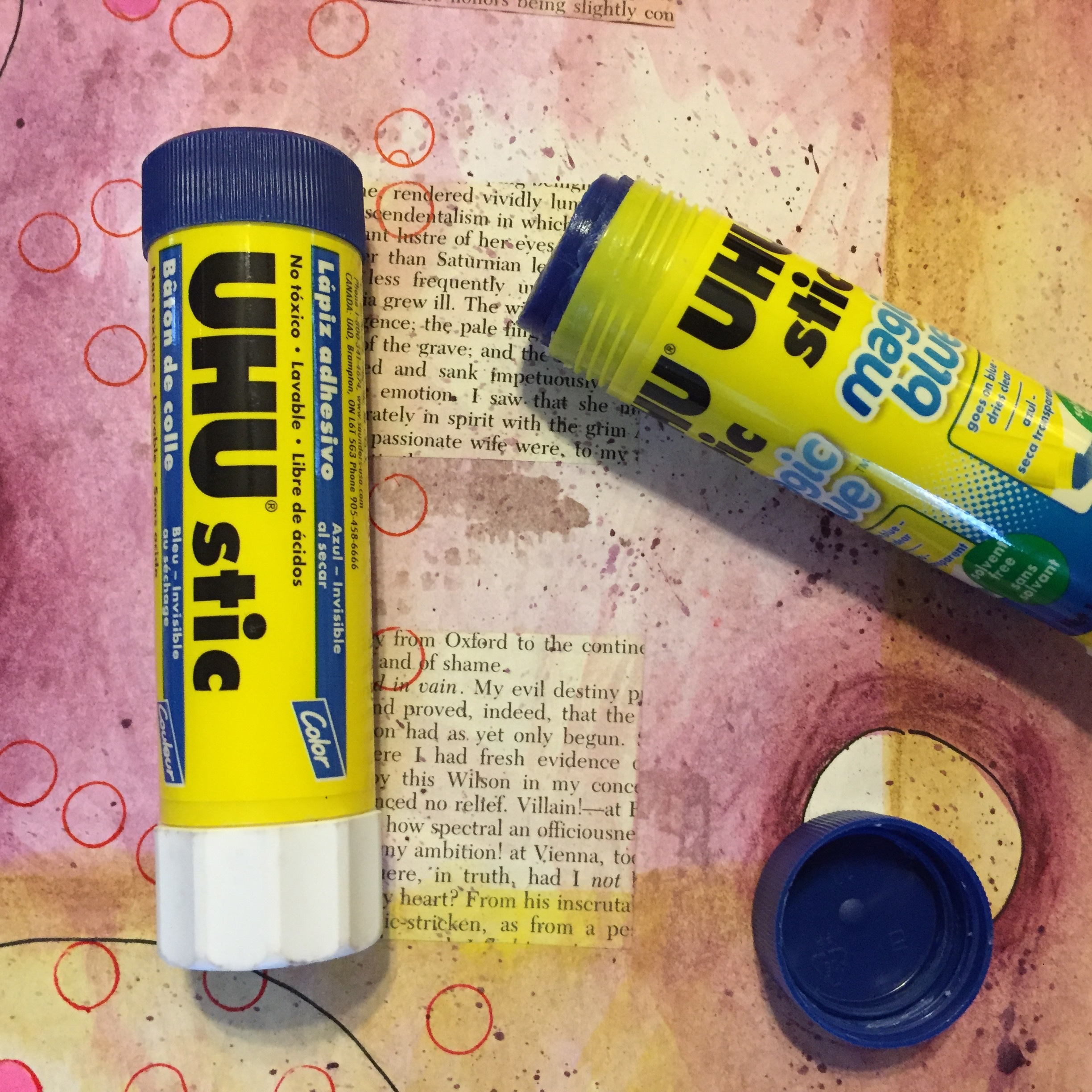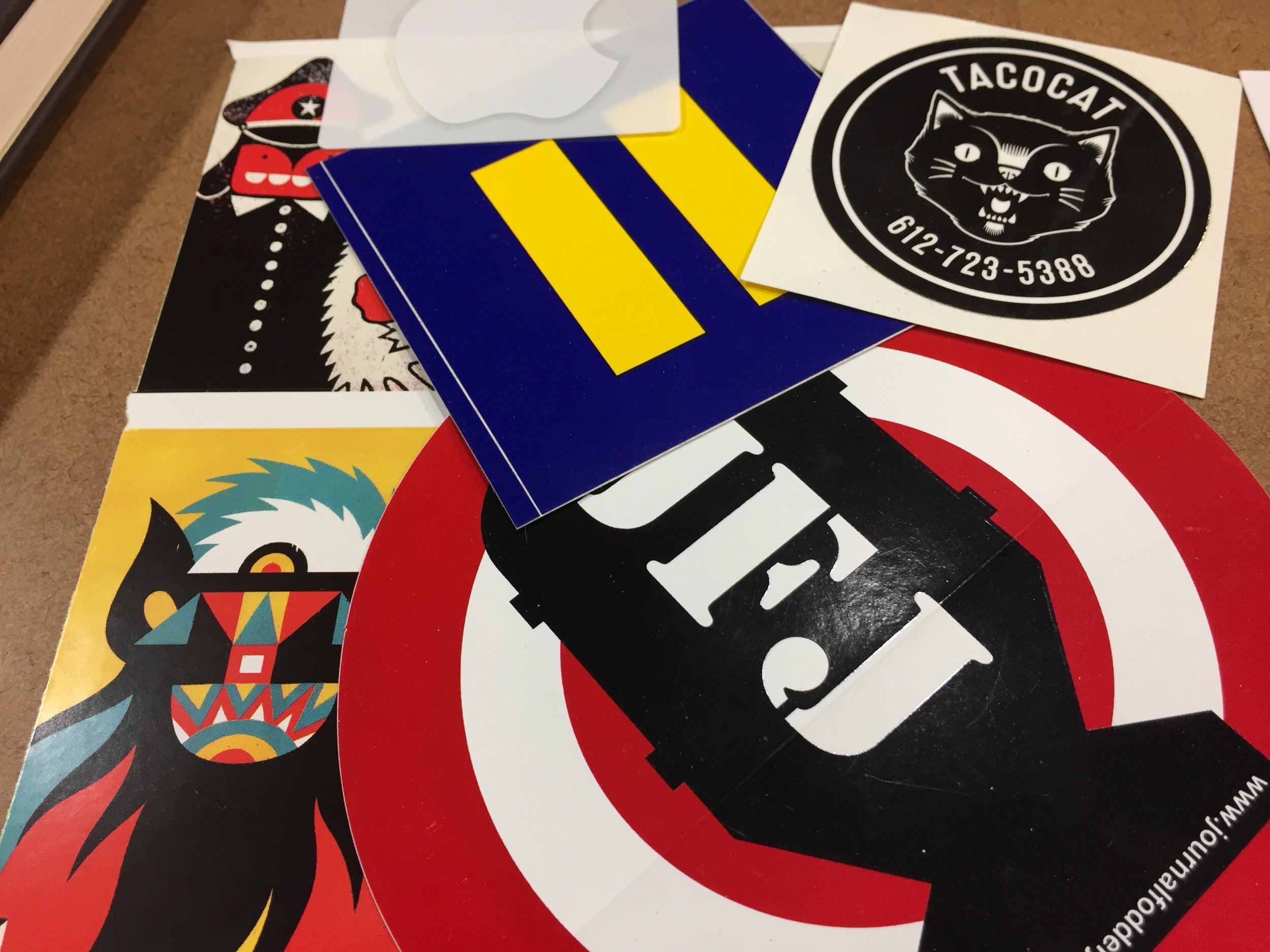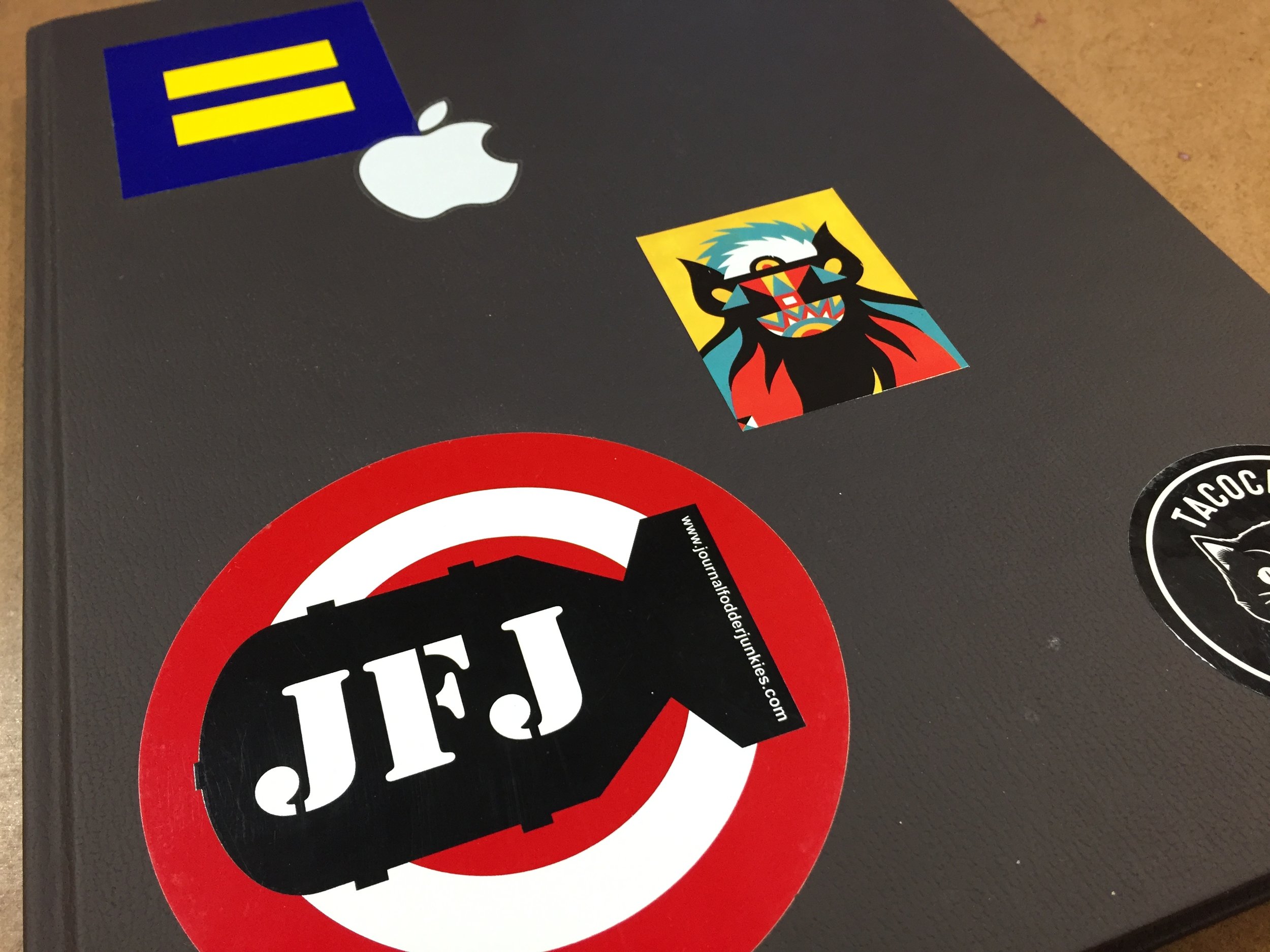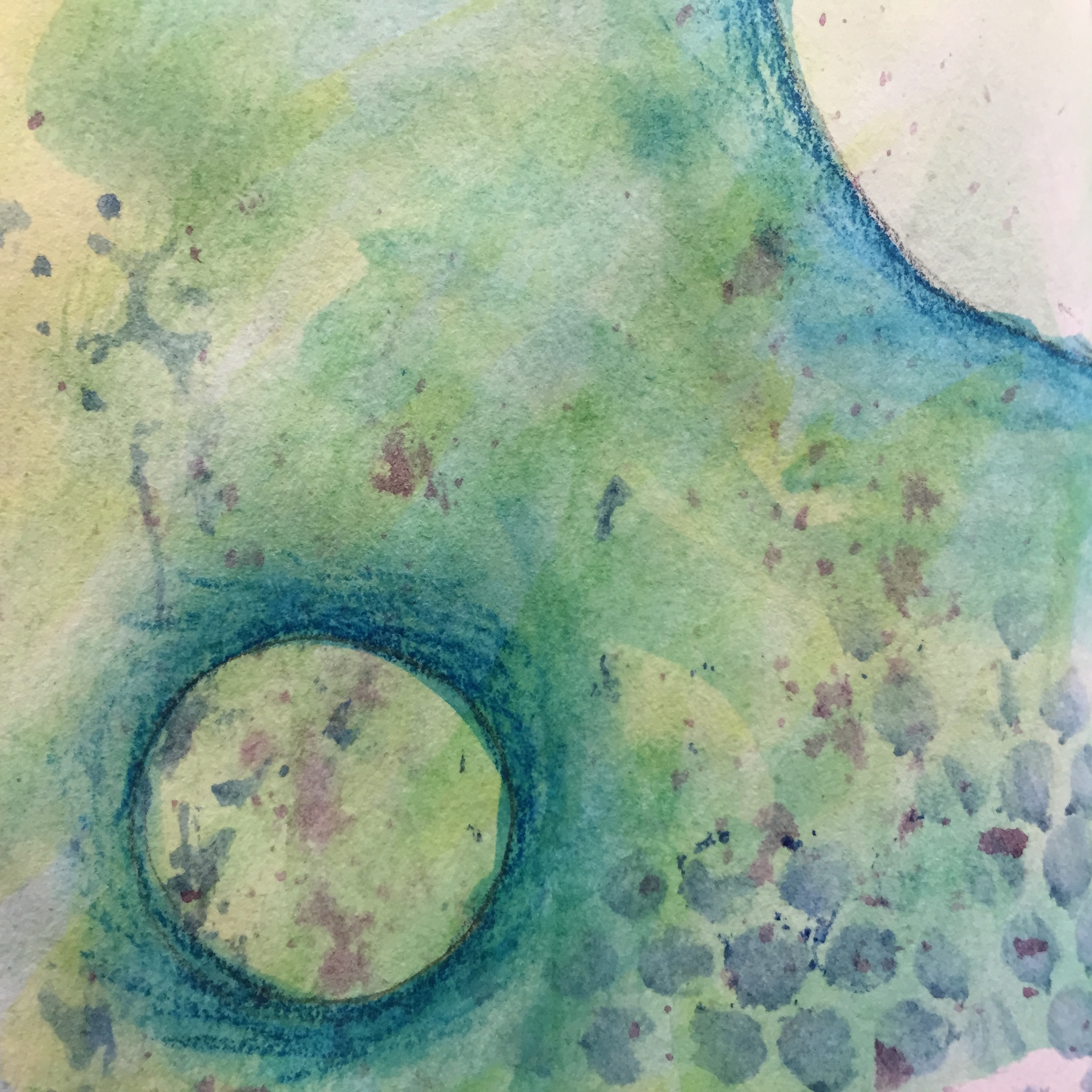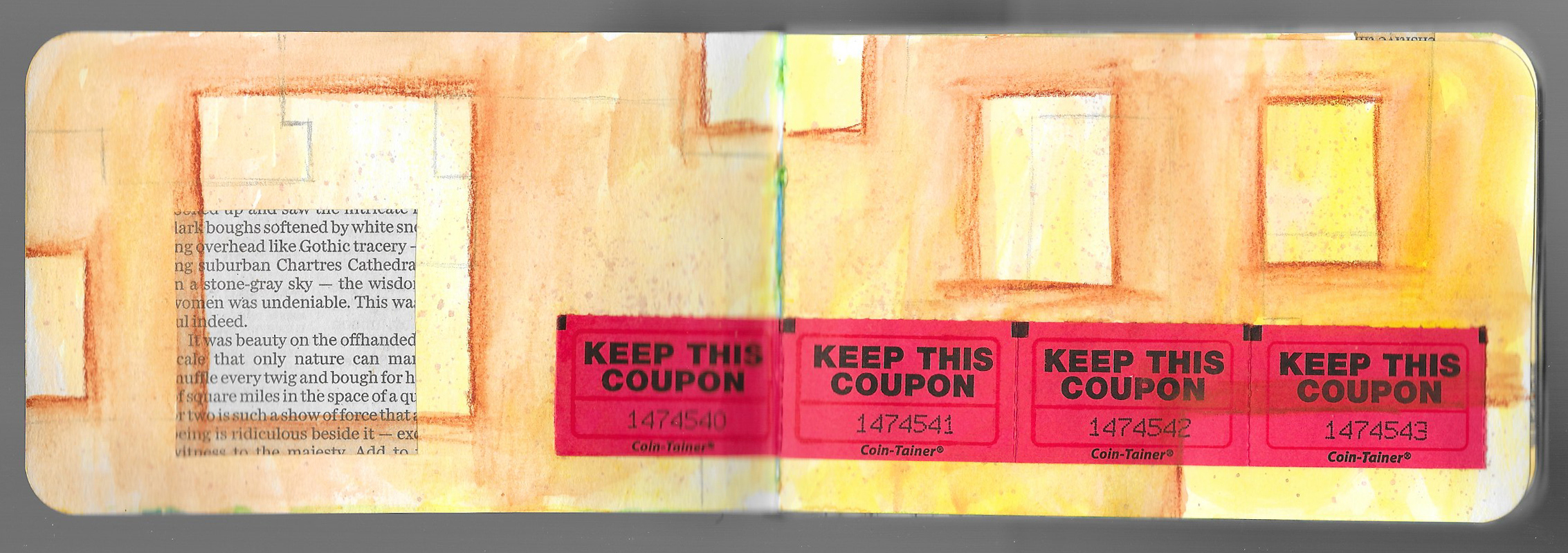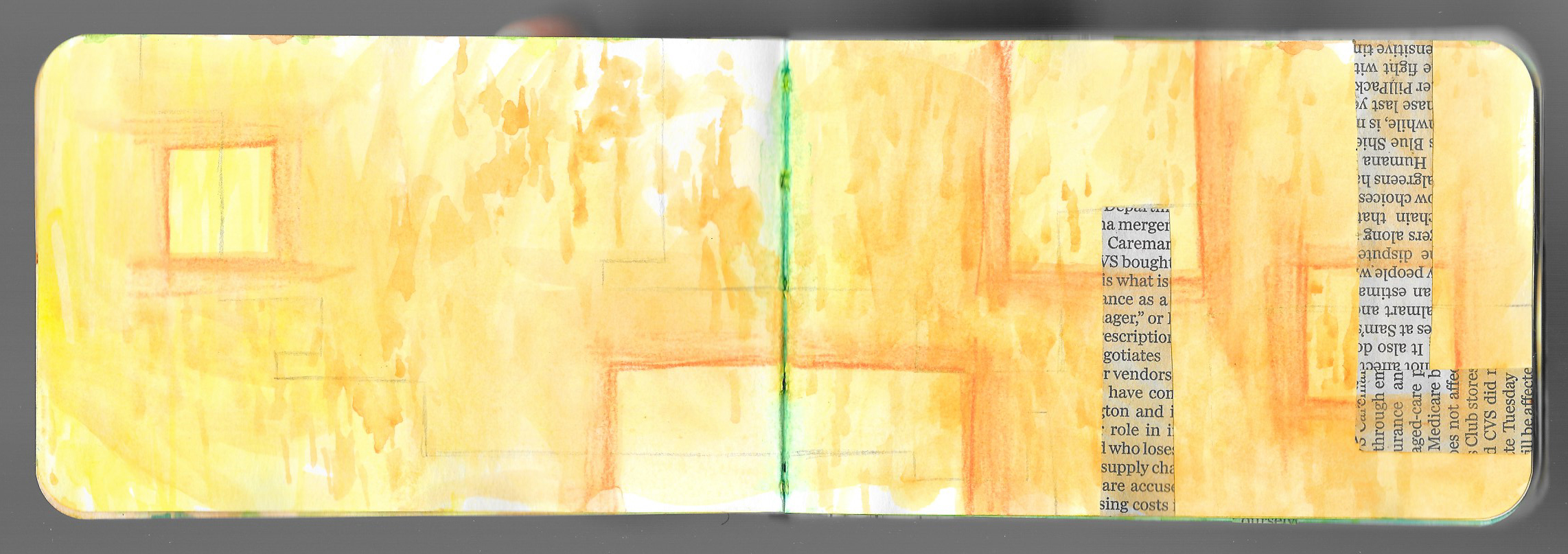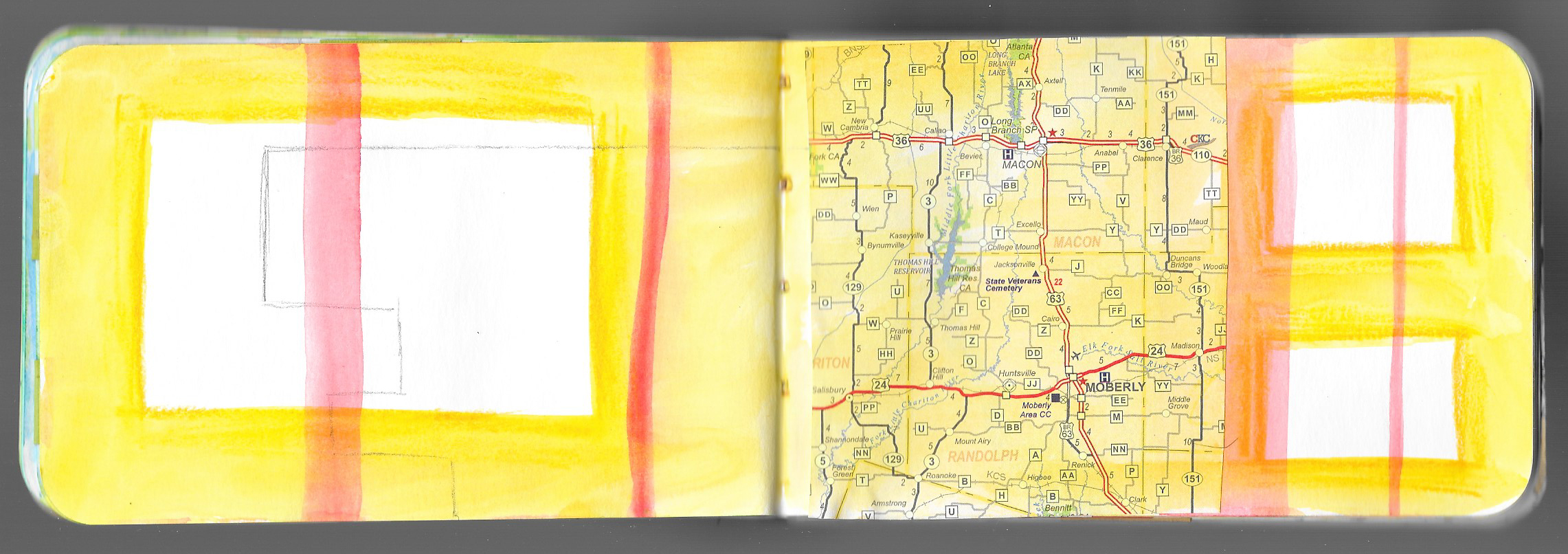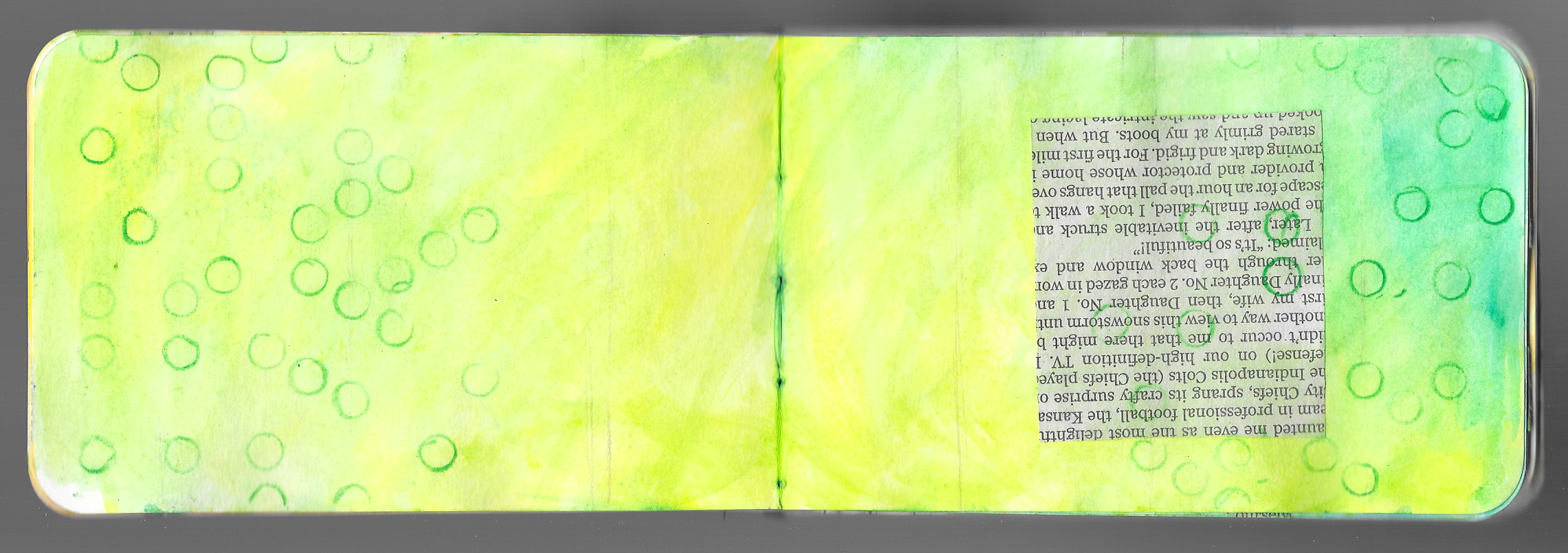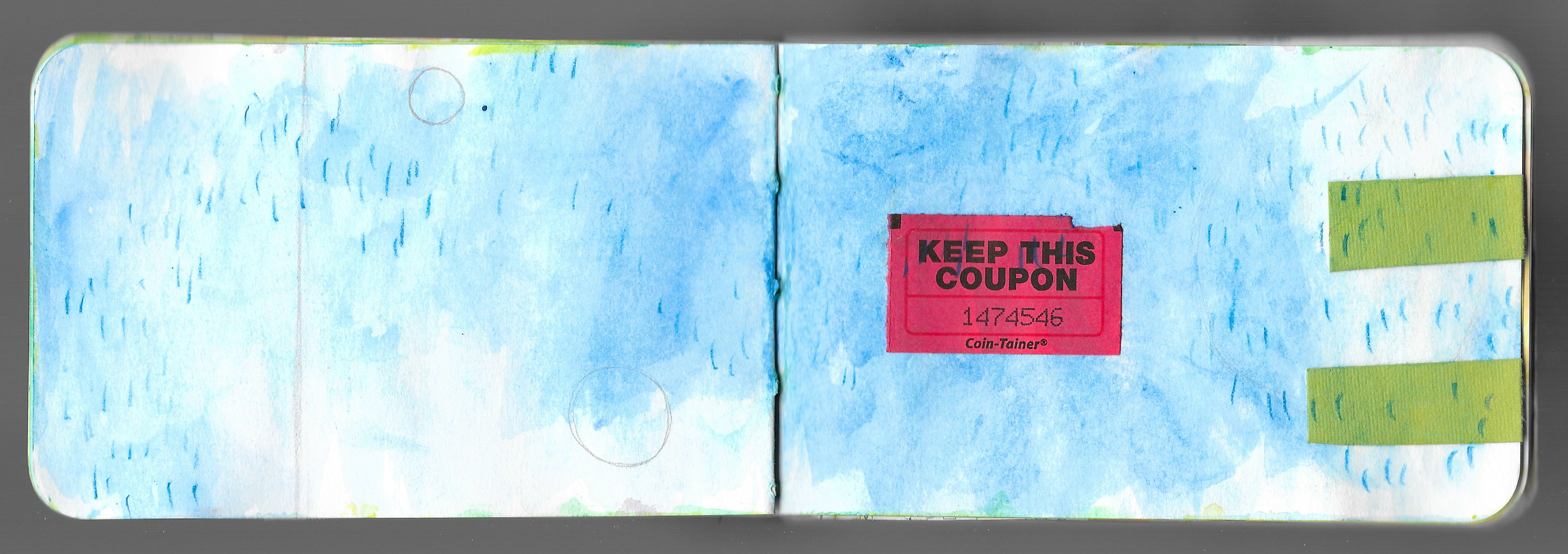Welcome to Lesson 6 of the Creative Prayer Book. Over the past 5 weeks, I’ve built up layers of watercolor, graphite pencil, collage, watercolor pencil, ink, and Inktense pencils. For this week’s lesson, I turn again to collage, but this time I want to be a bit more purposeful with the fodder that I choose.
Magazines
Magazines are always a good source of collage materials, and I look for small images to use or for parts of larger photos that can fit into the format of may pages.
Personal Fodder
I also look through my stash of personal ephemera and find photos of myself, scraps of paper, postcards, and other things that have a personal connection.
Artwork
Finally, I find some small works of art that I can cut up. These are experimental or unfinished pieces that have been sitting around the studio, and I gather a variety to use.
I use the collage in a variety of ways, and I cut some of it into horizontal or vertical strips. I also cut out small squares and rectangles. Some of the pieces are recognizable images, and some are simply textures and patterns. With some of the collage, I cut it so that it can fit into certain spaces and certain shapes, and with it all I use my favorite glue stick, UHU, to glue it all onto my pages. Some collage elements might be a bit thick and glossy, so I might consider using a different adhesive if I use them. I try to use the collage sparingly leaving room for the words and the affirmations that are to come.
Try adding some more collage to your pages!
Happy Creating!
